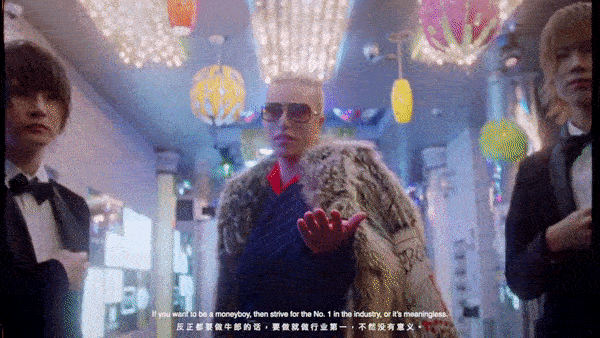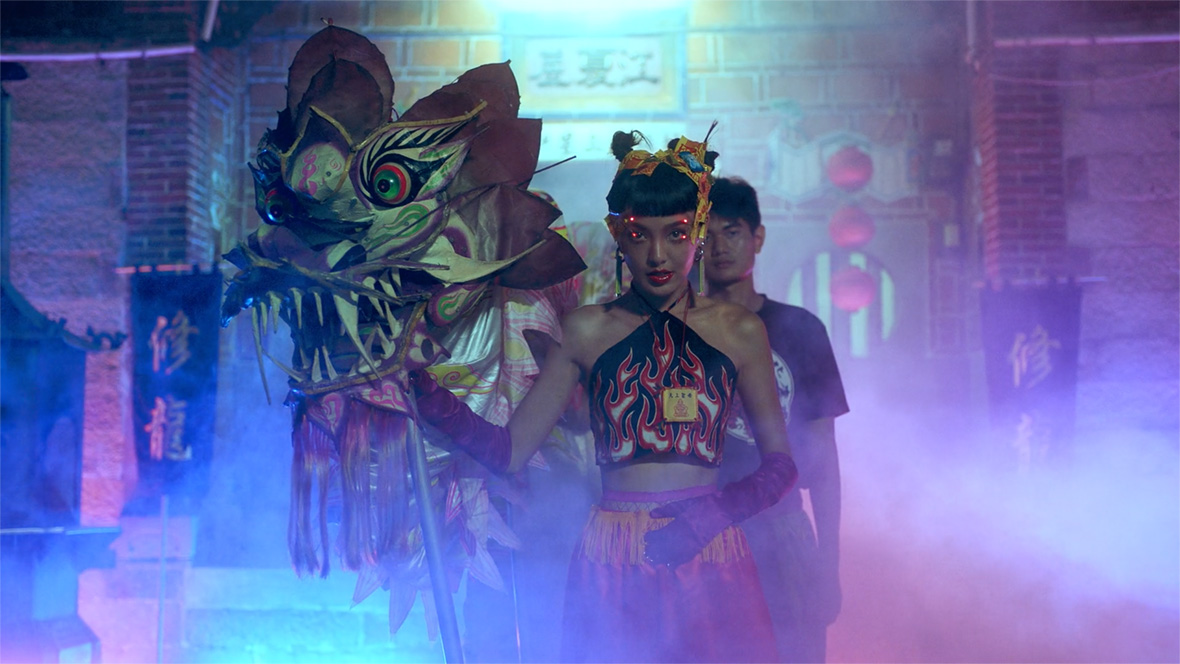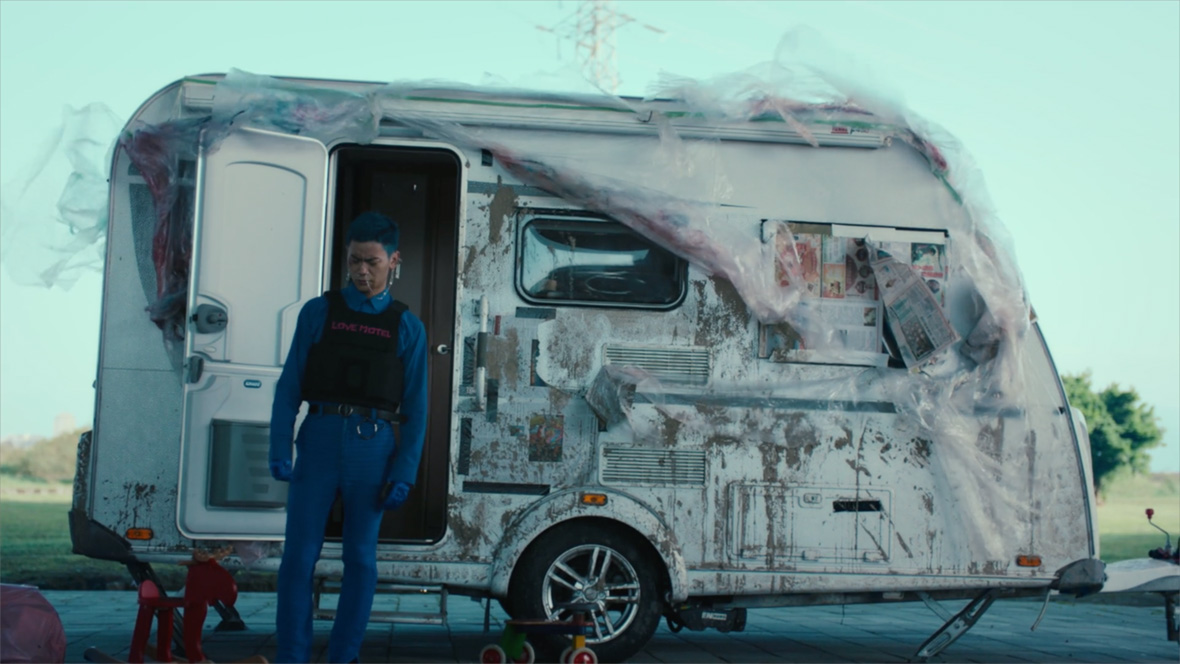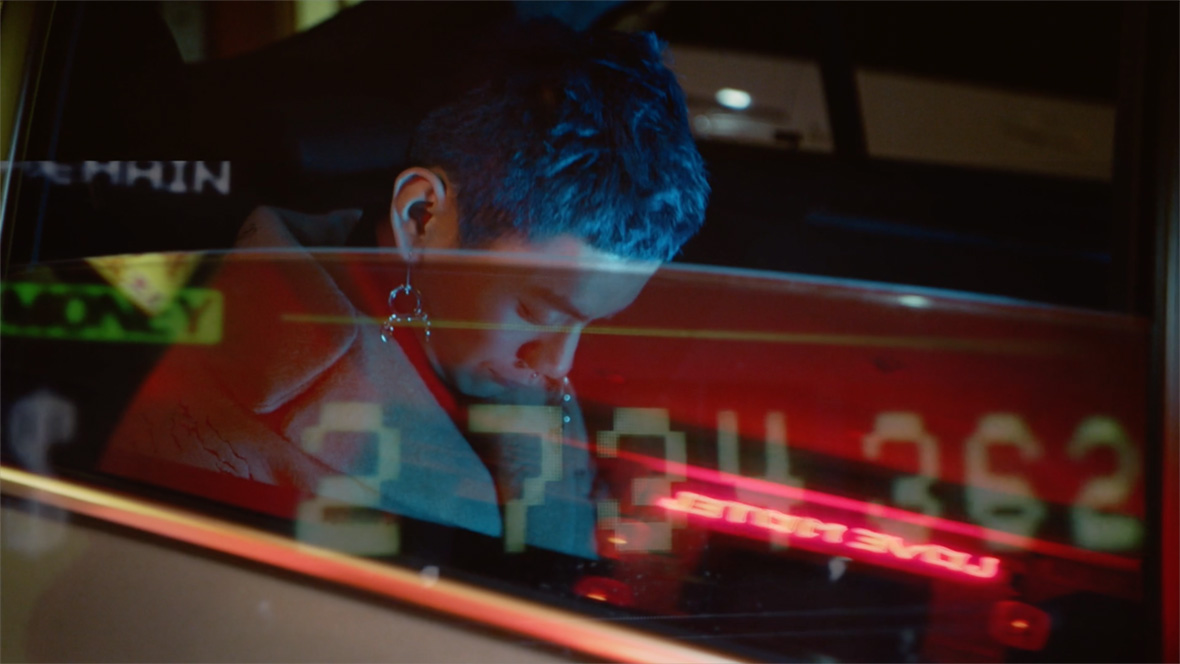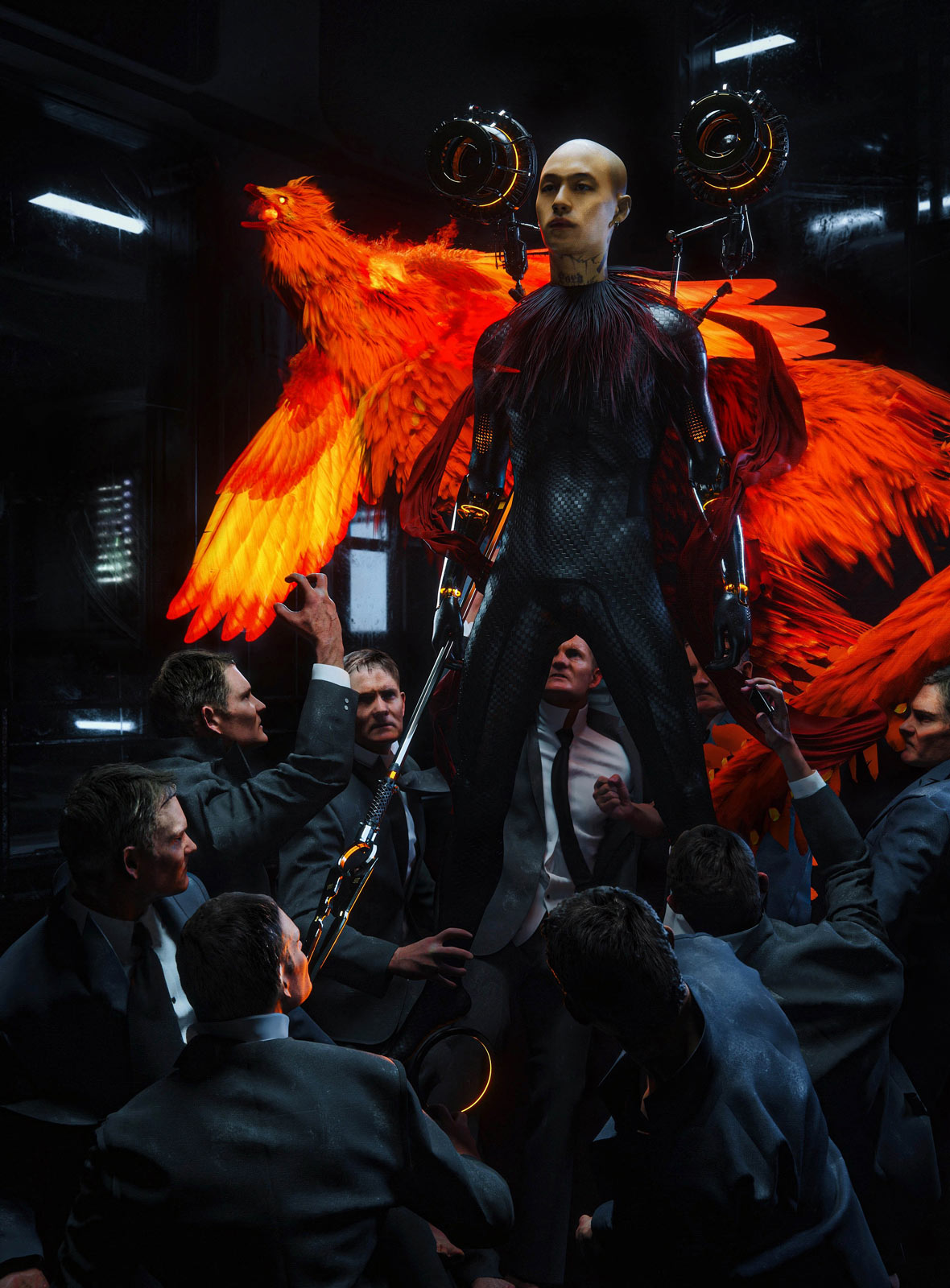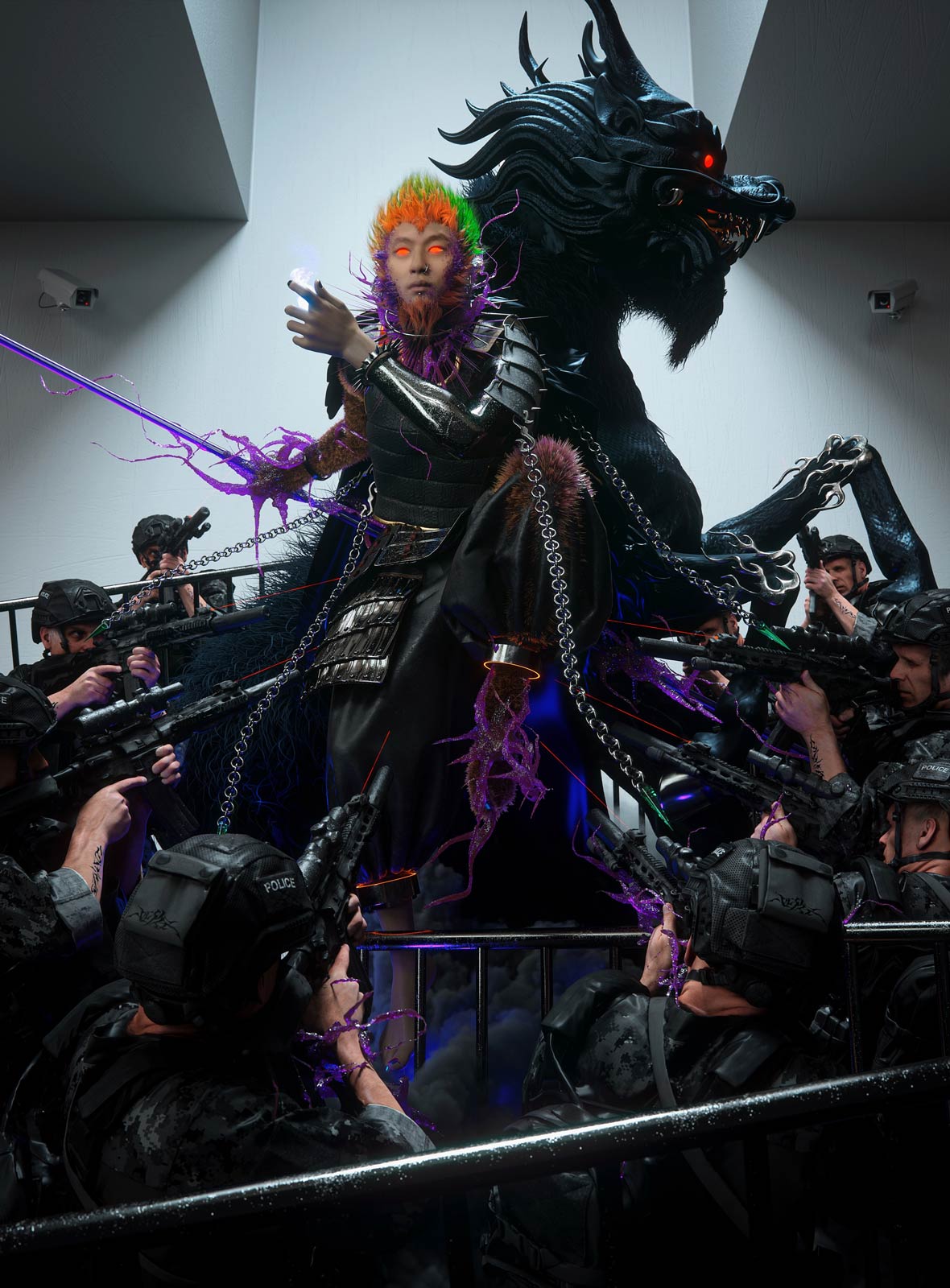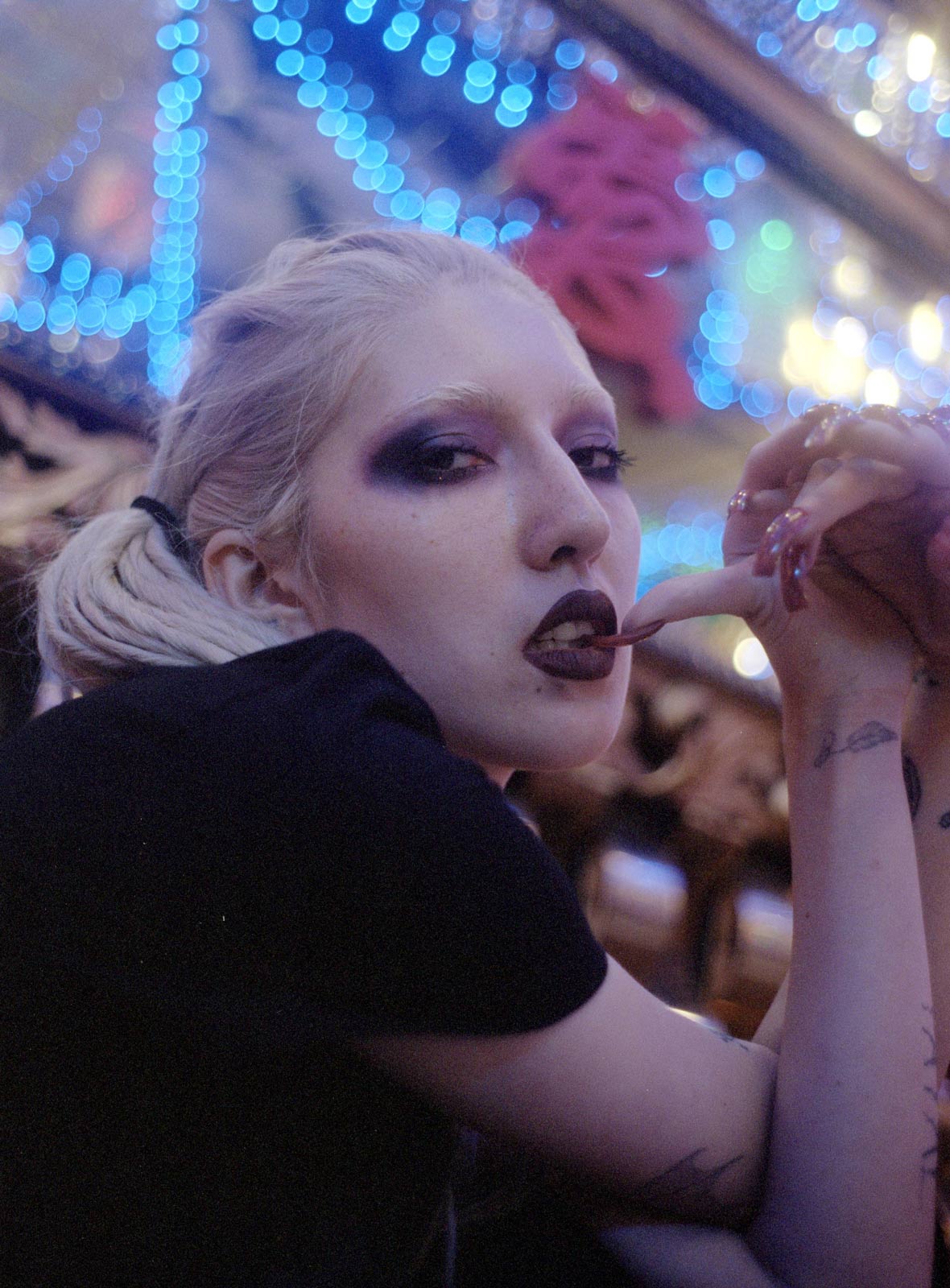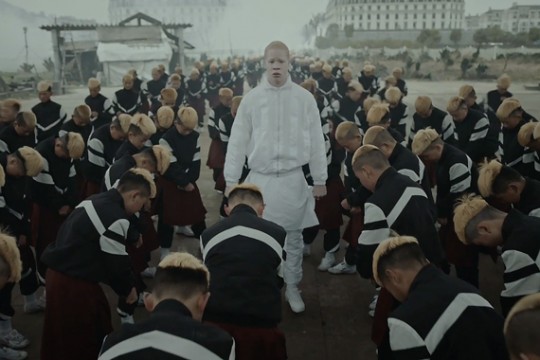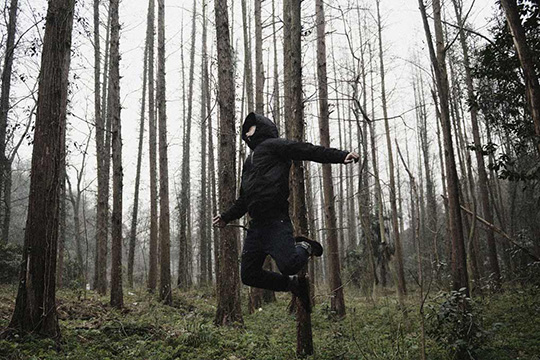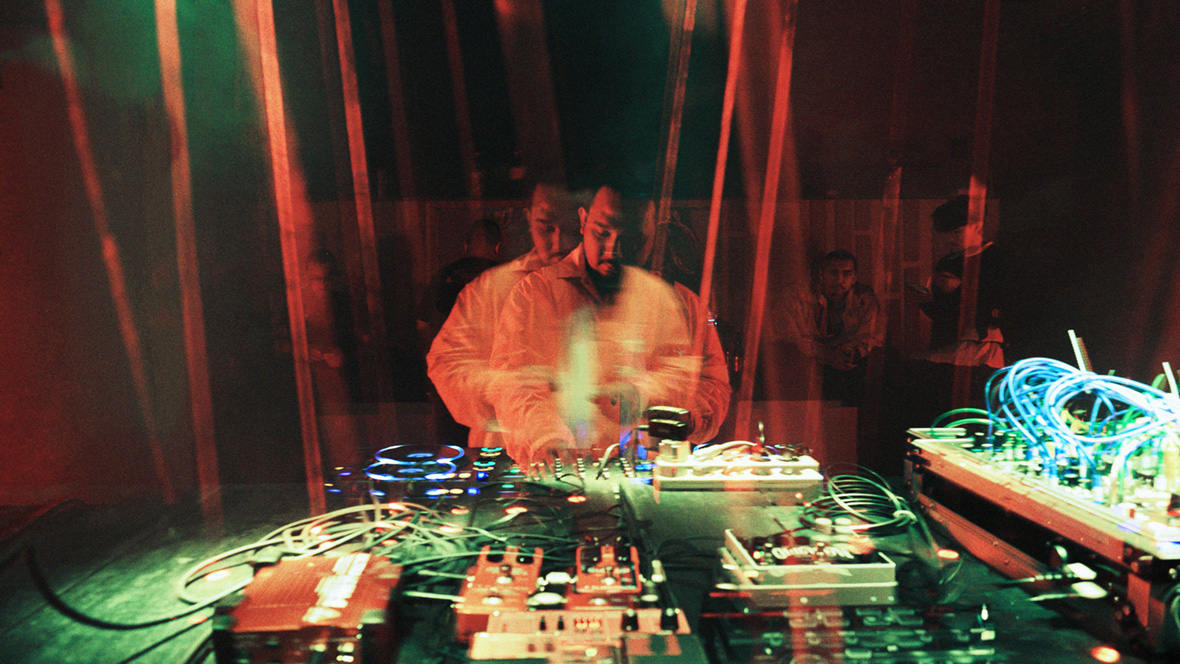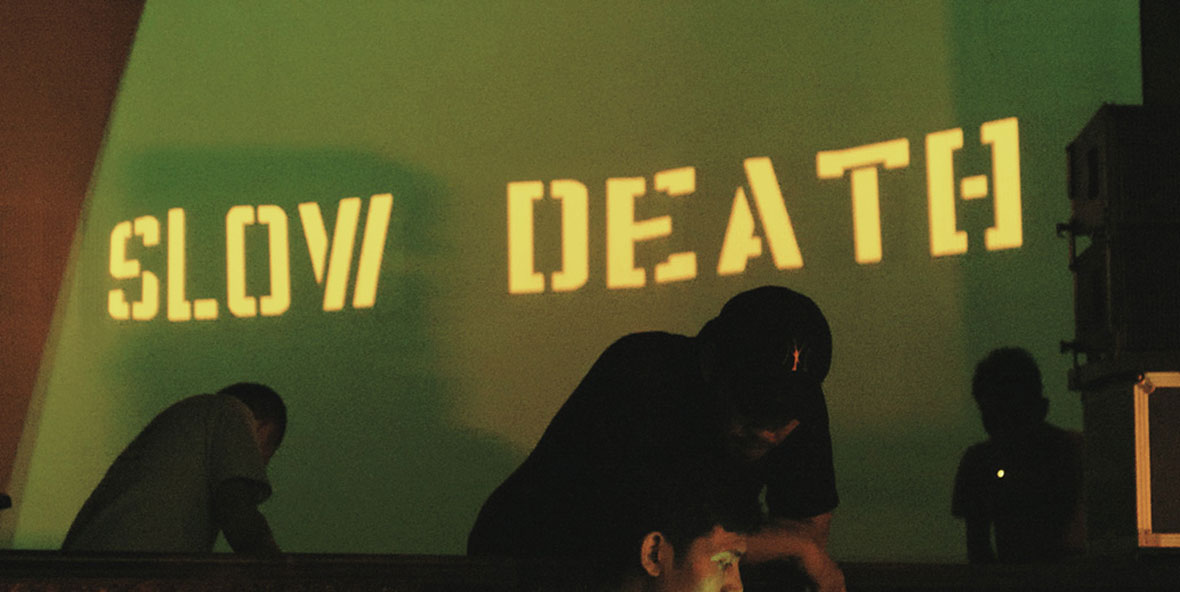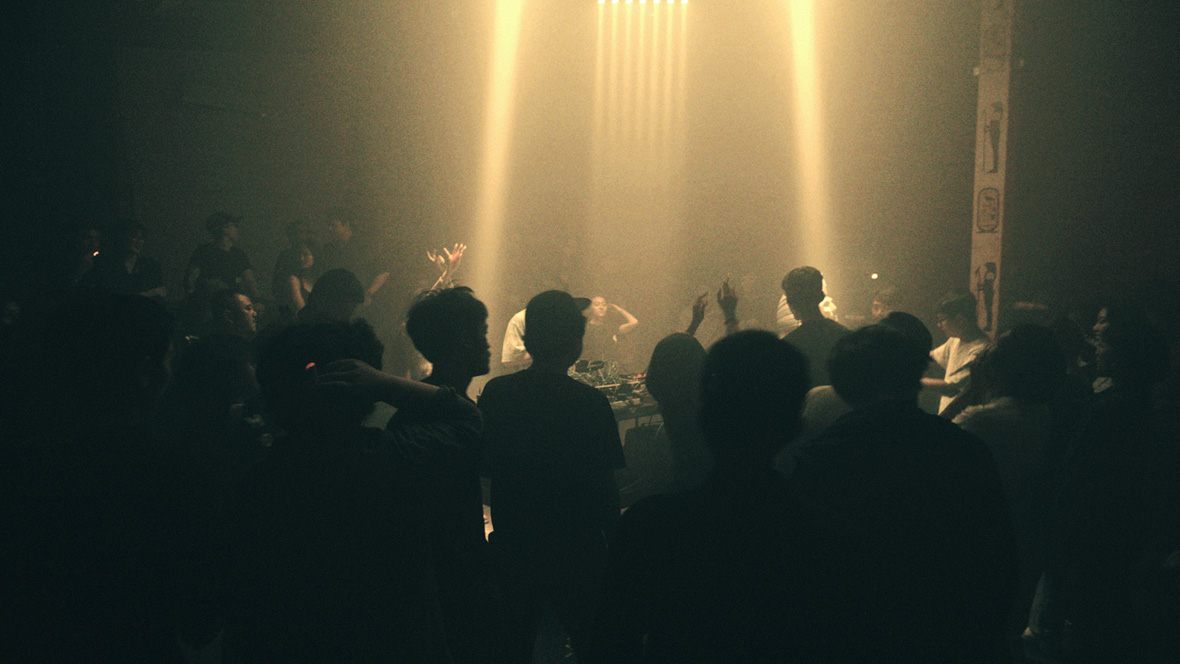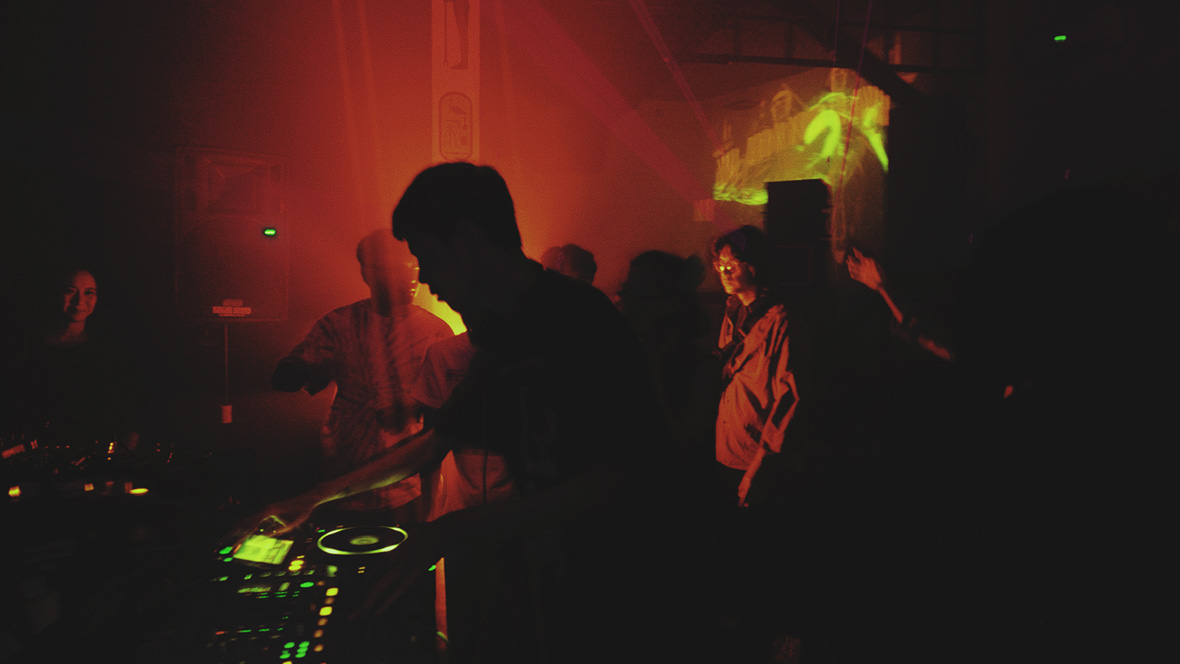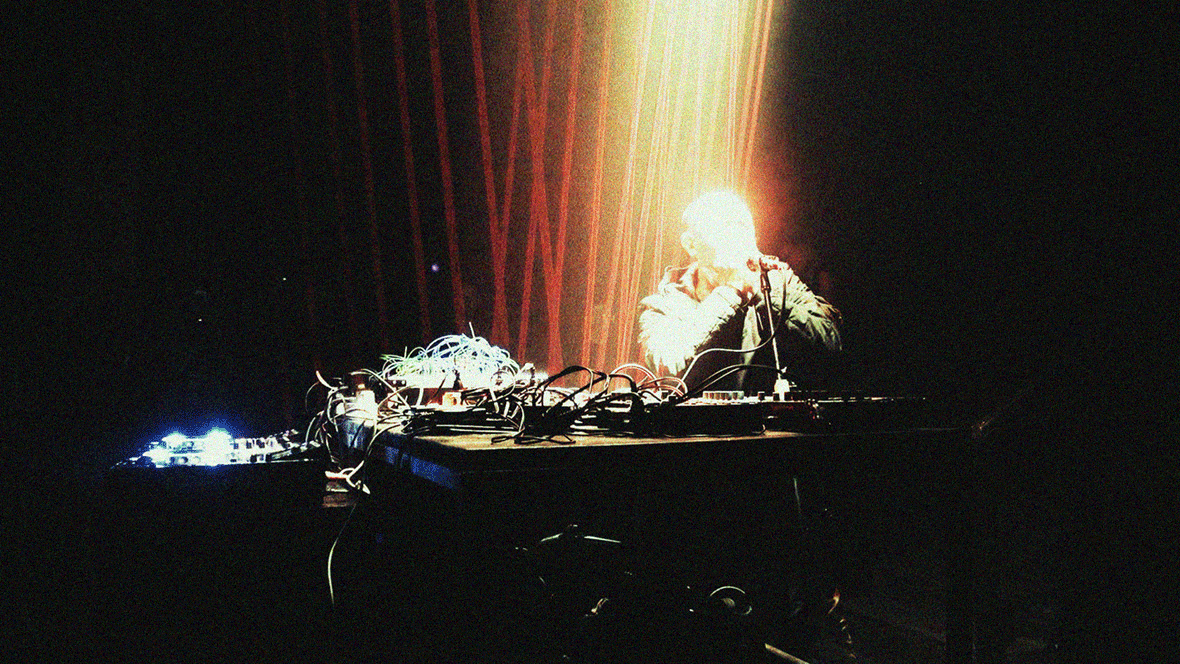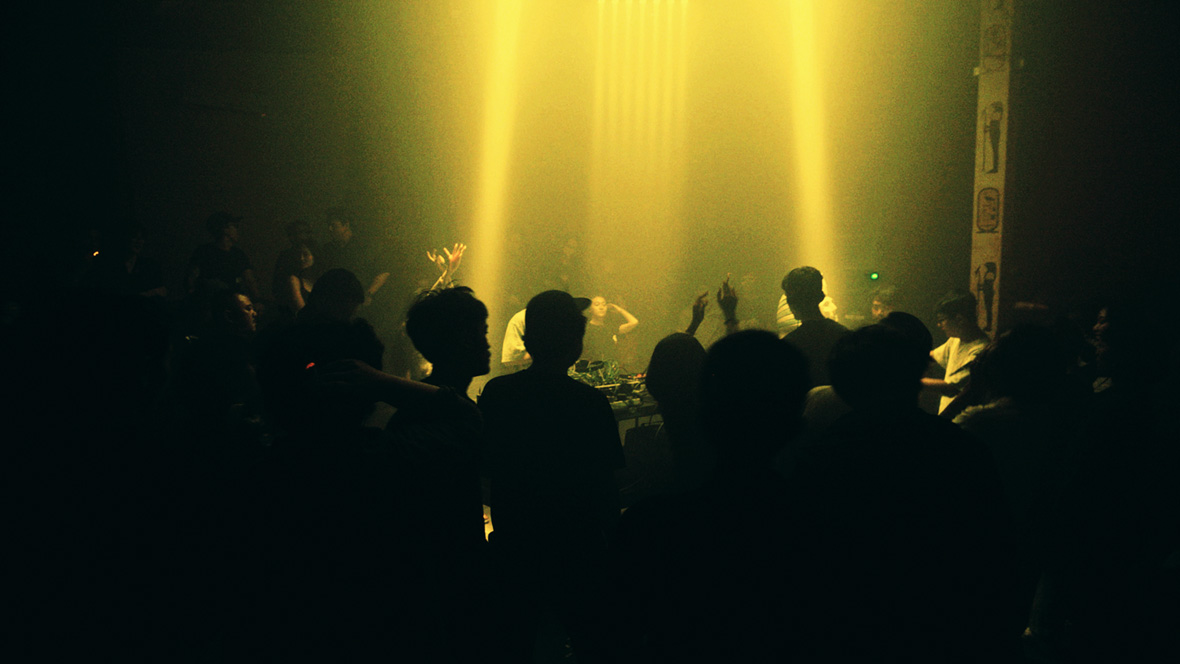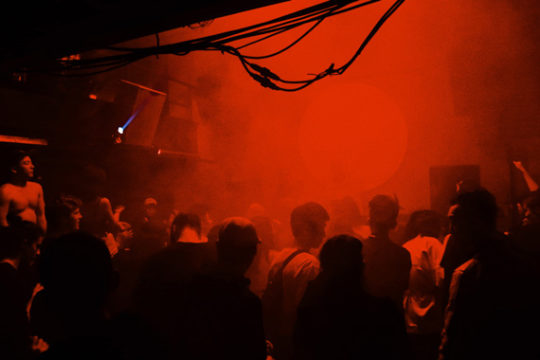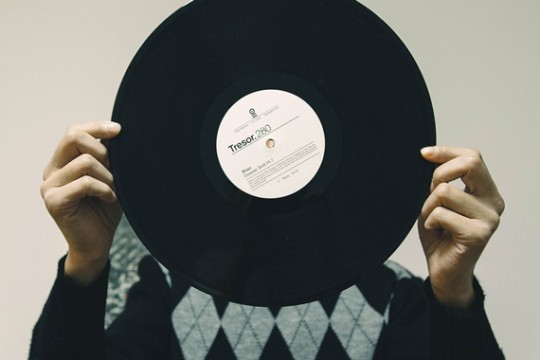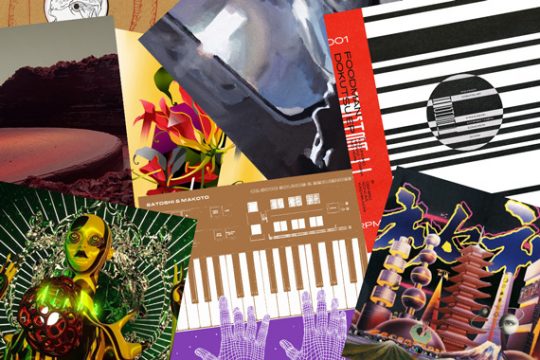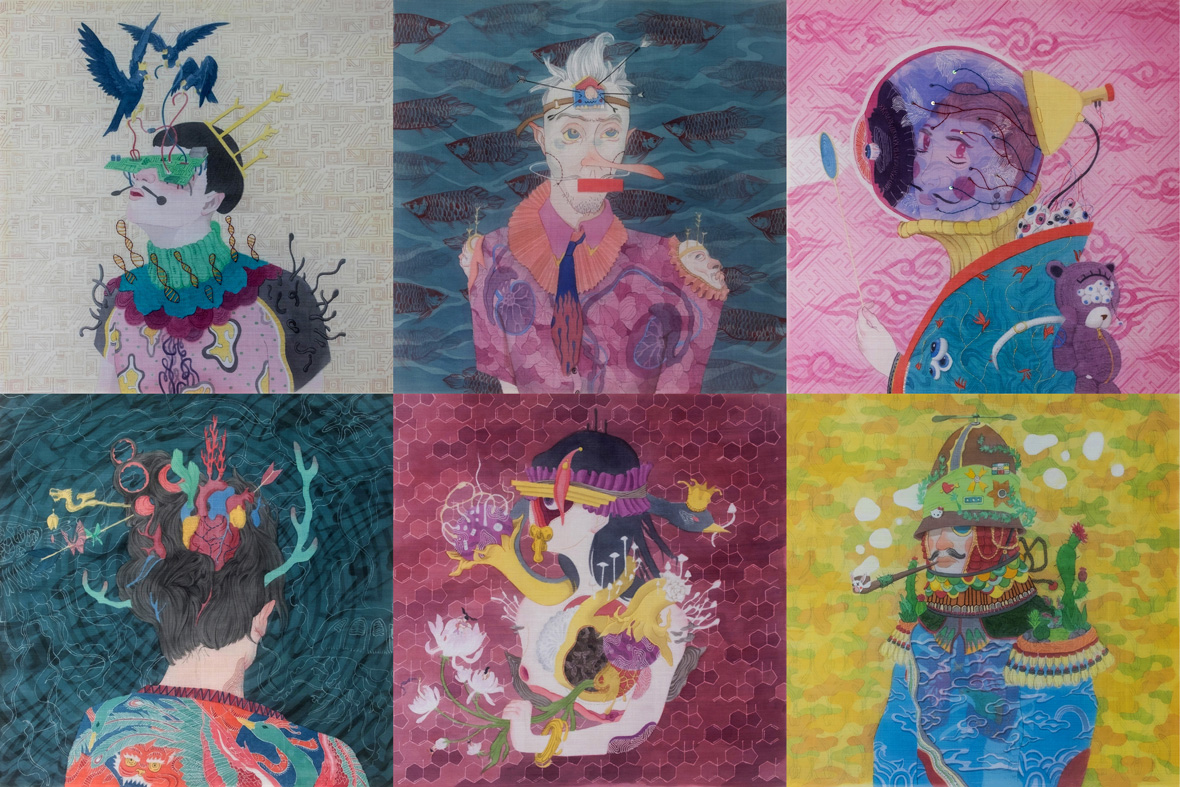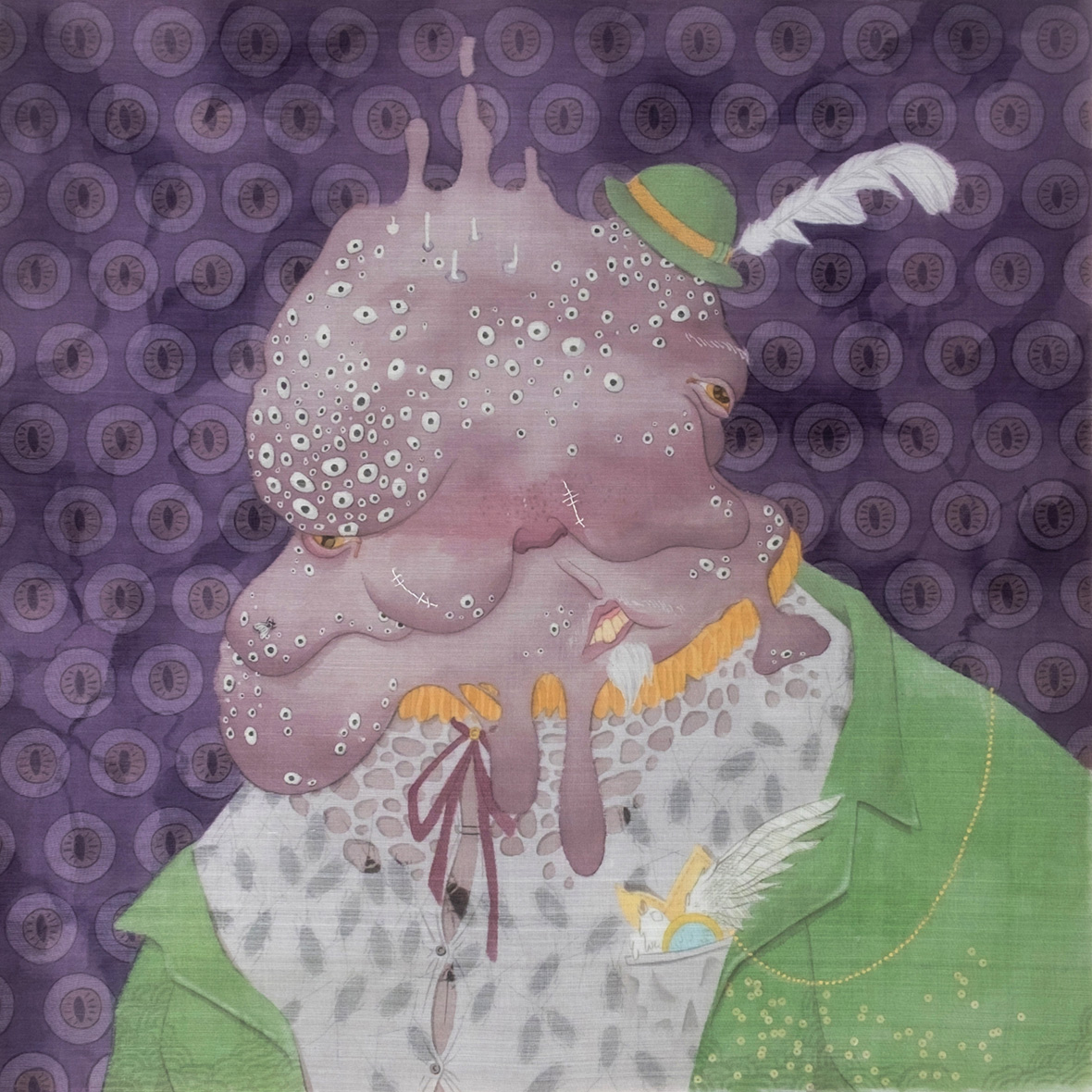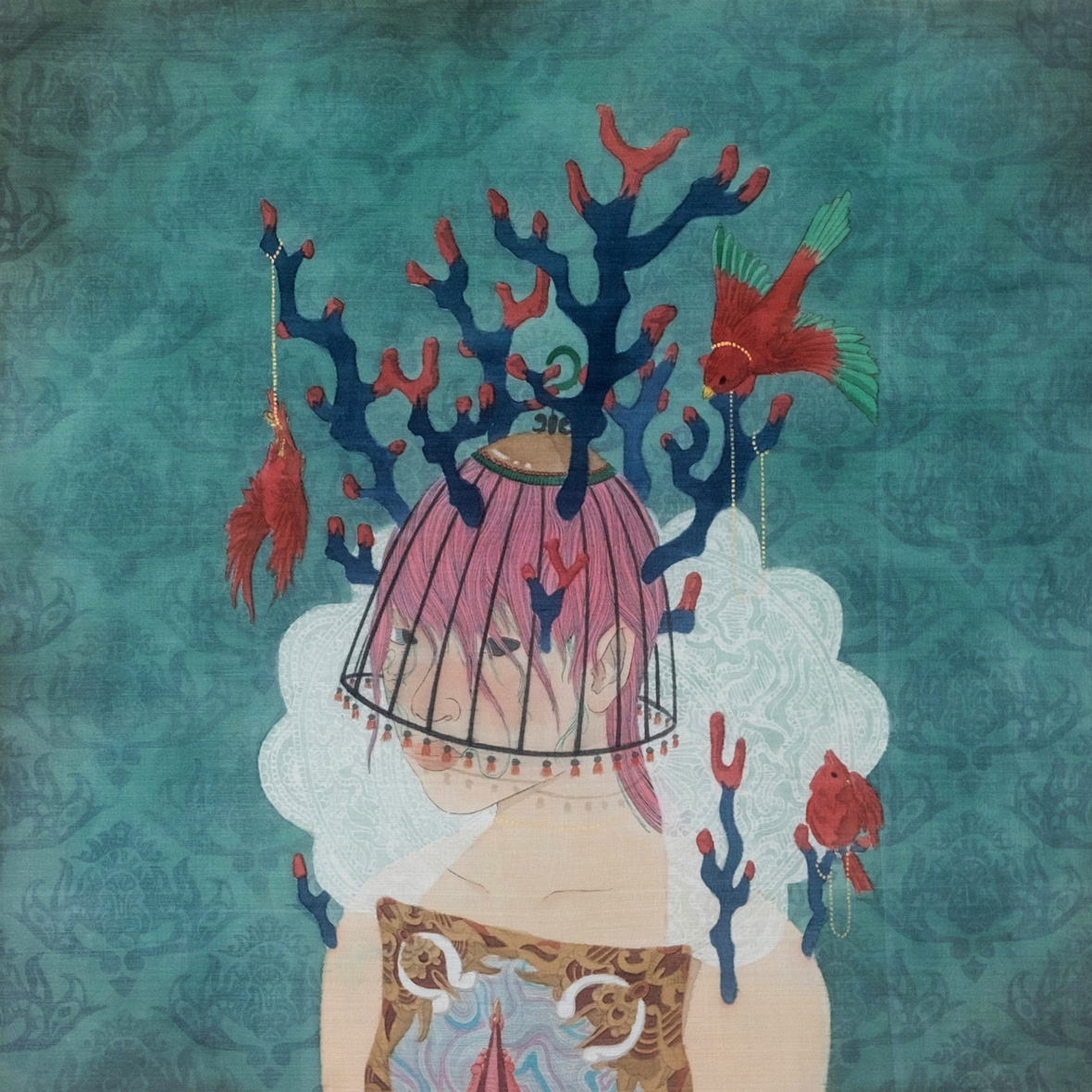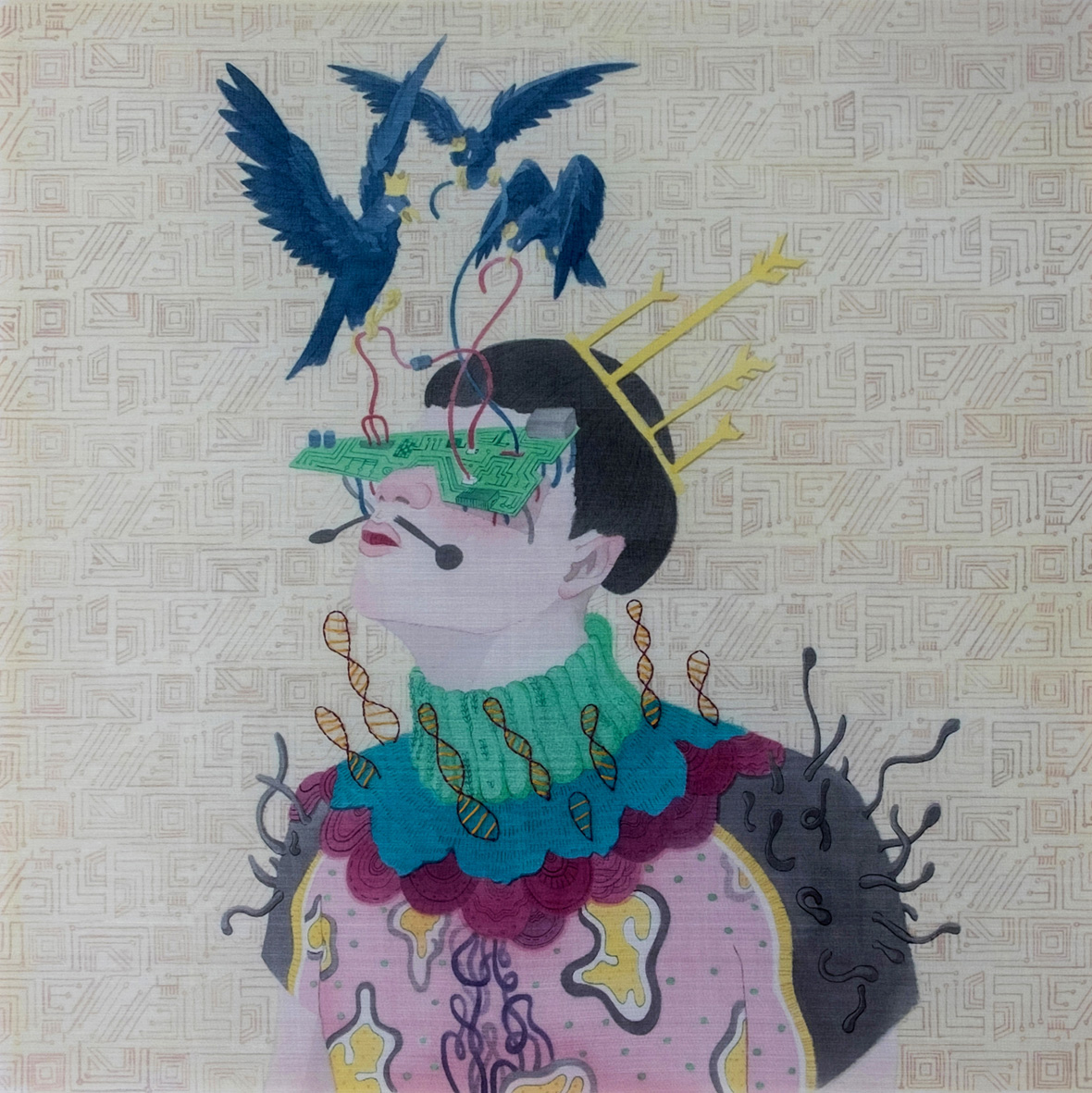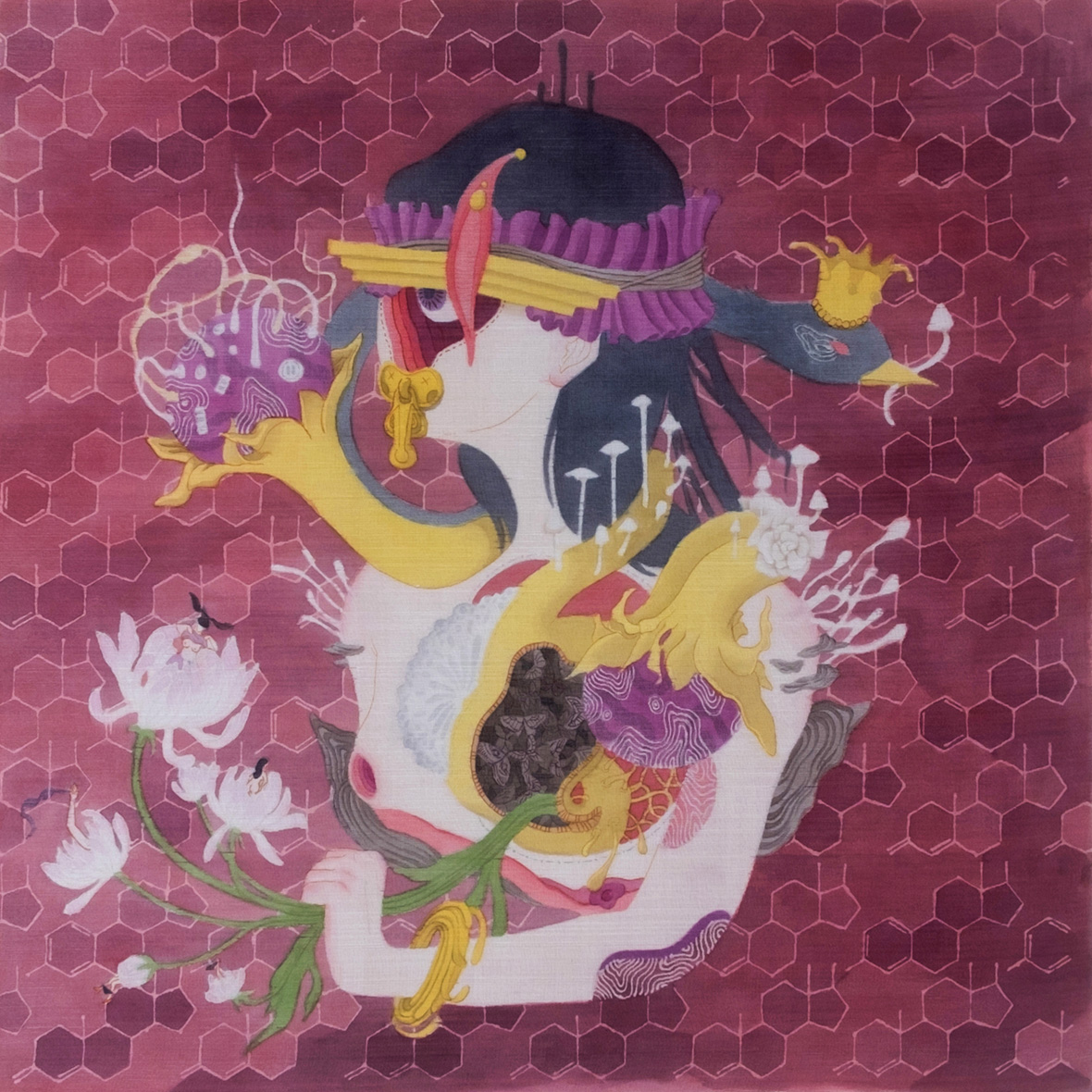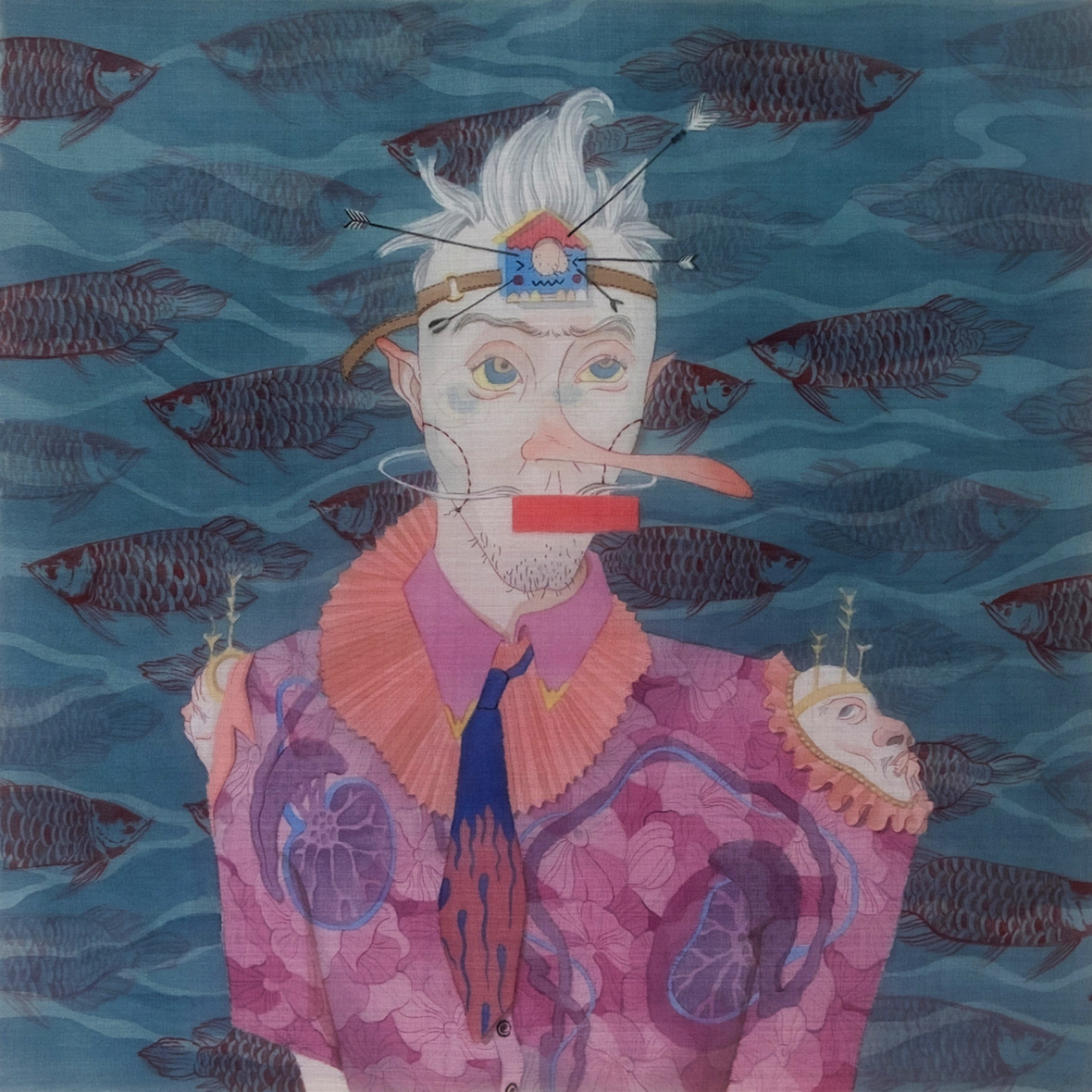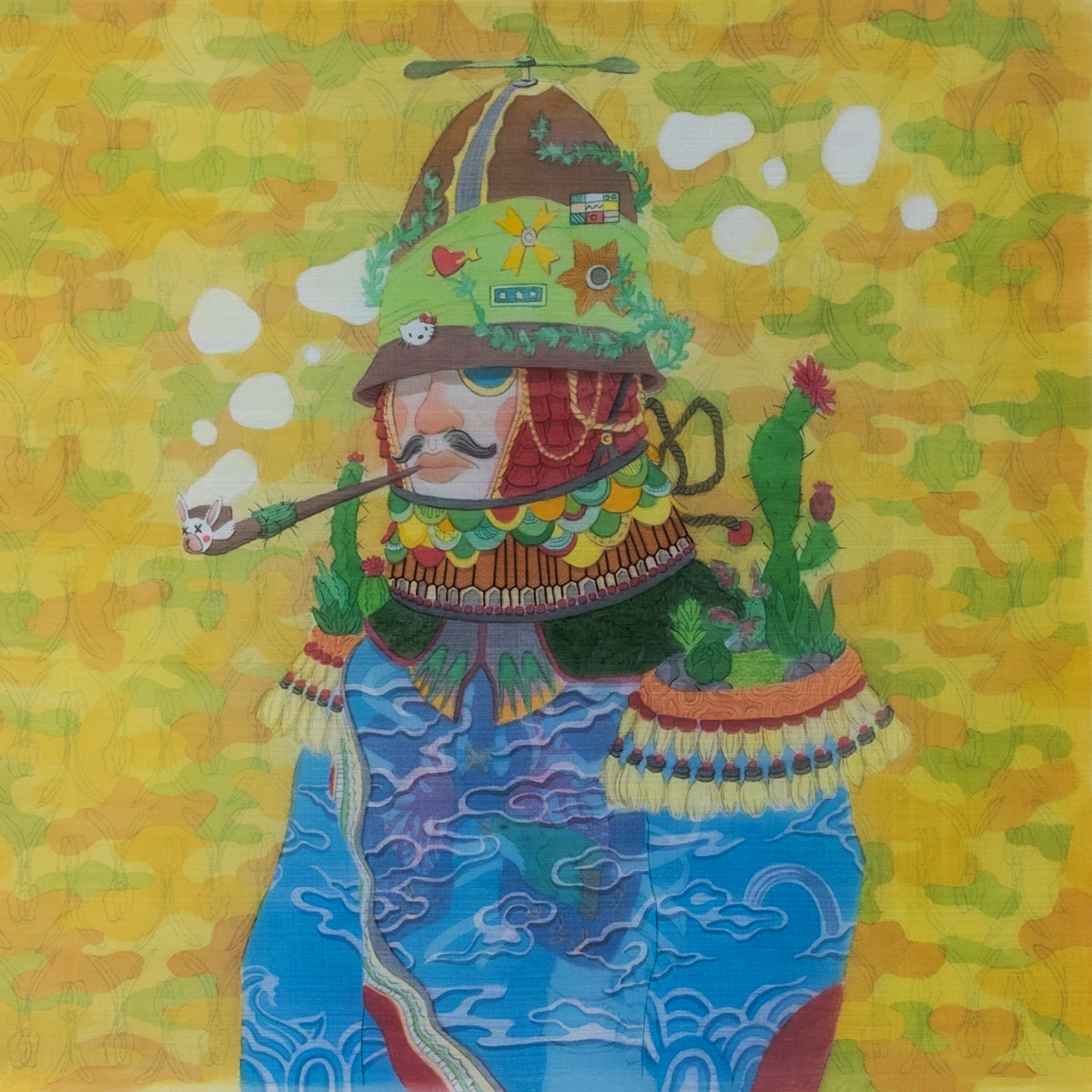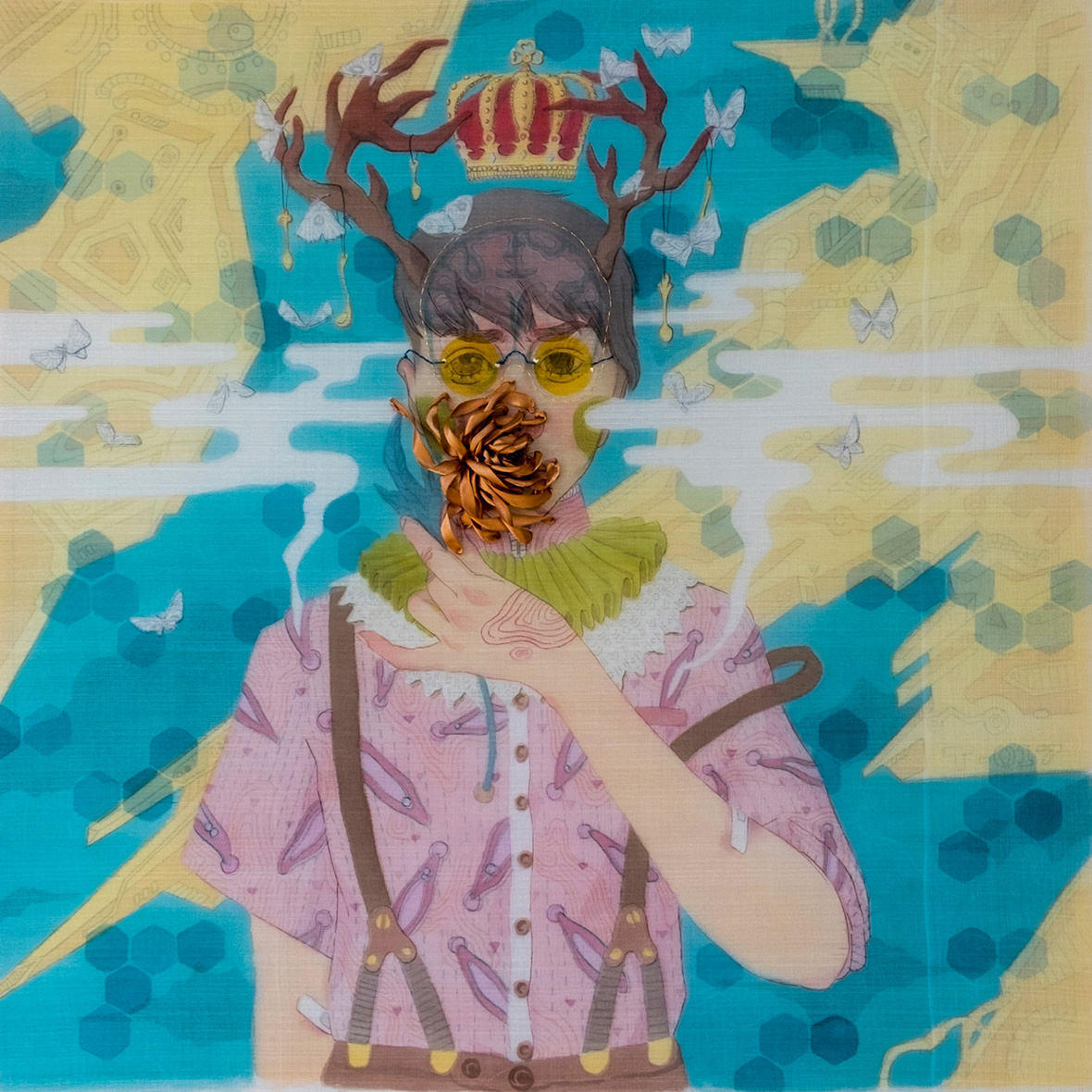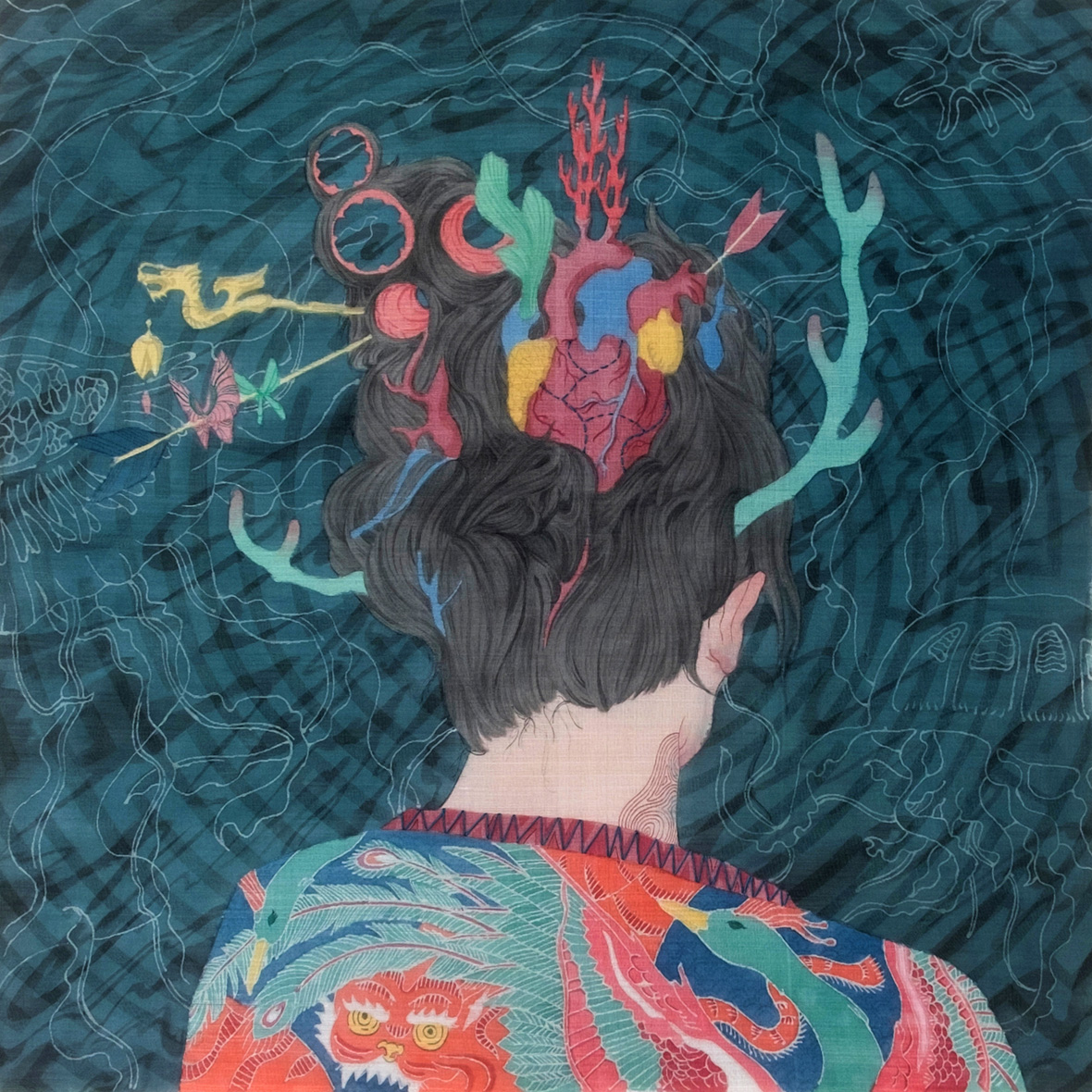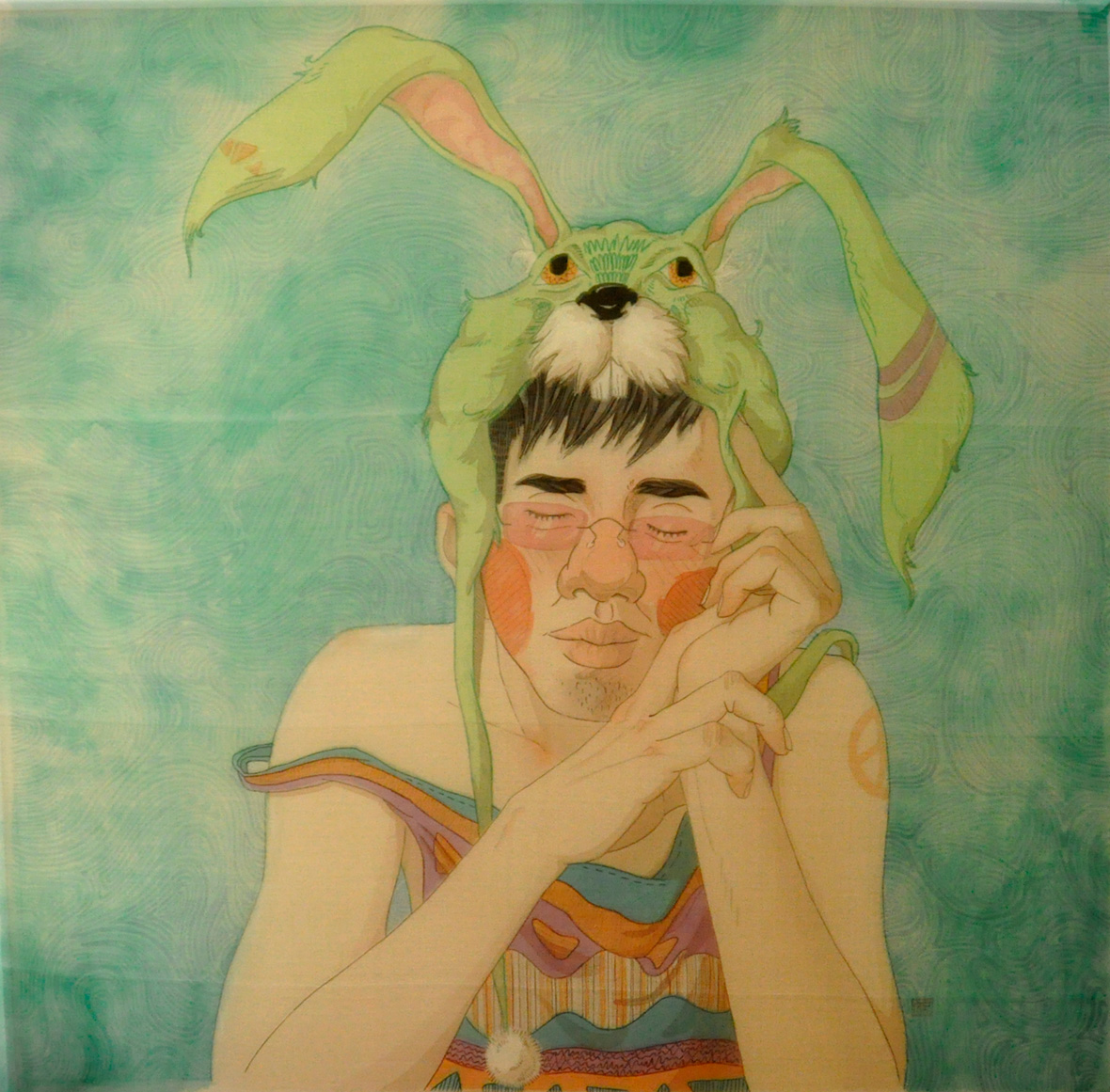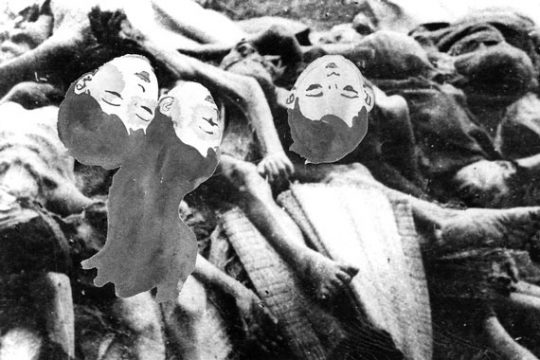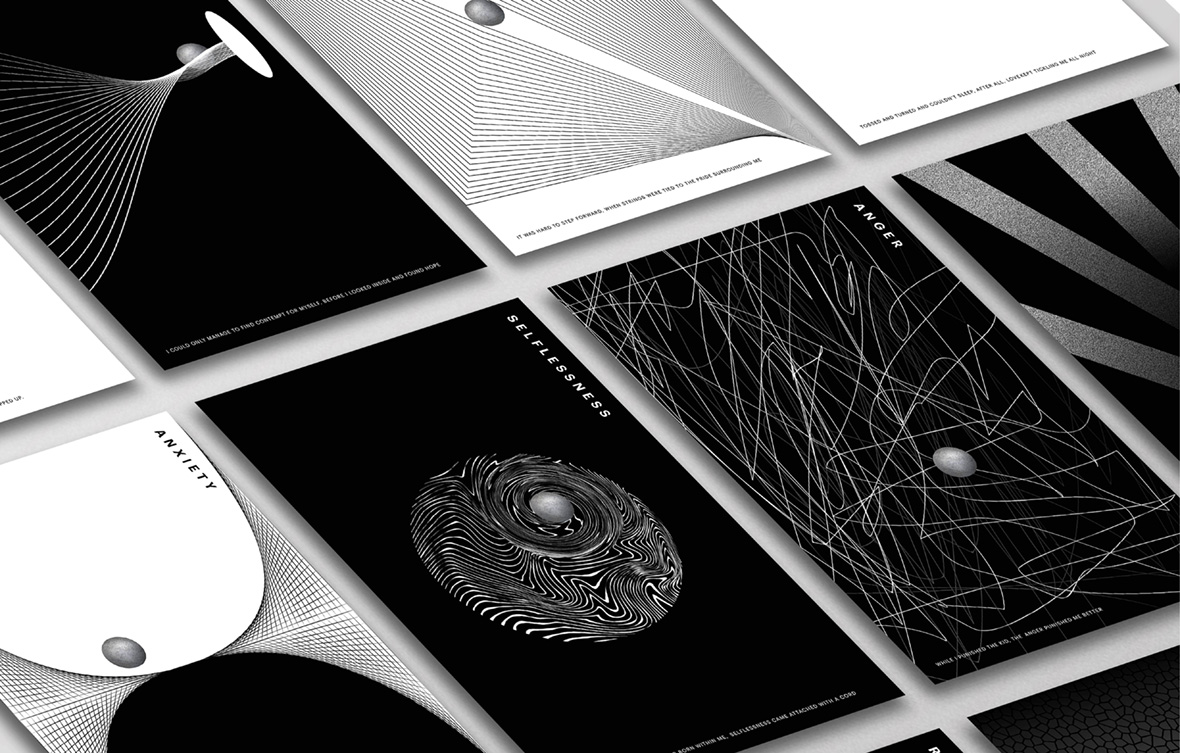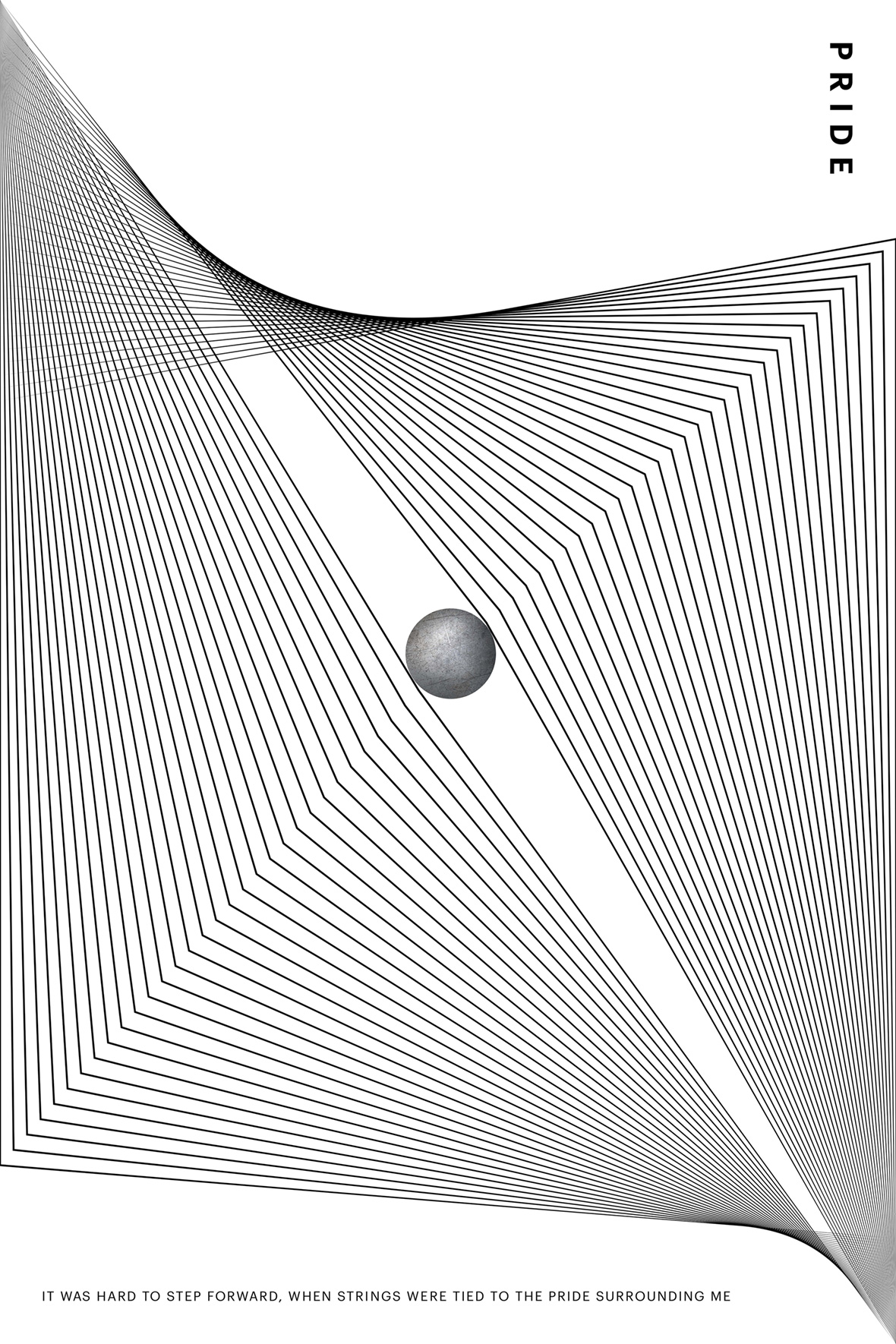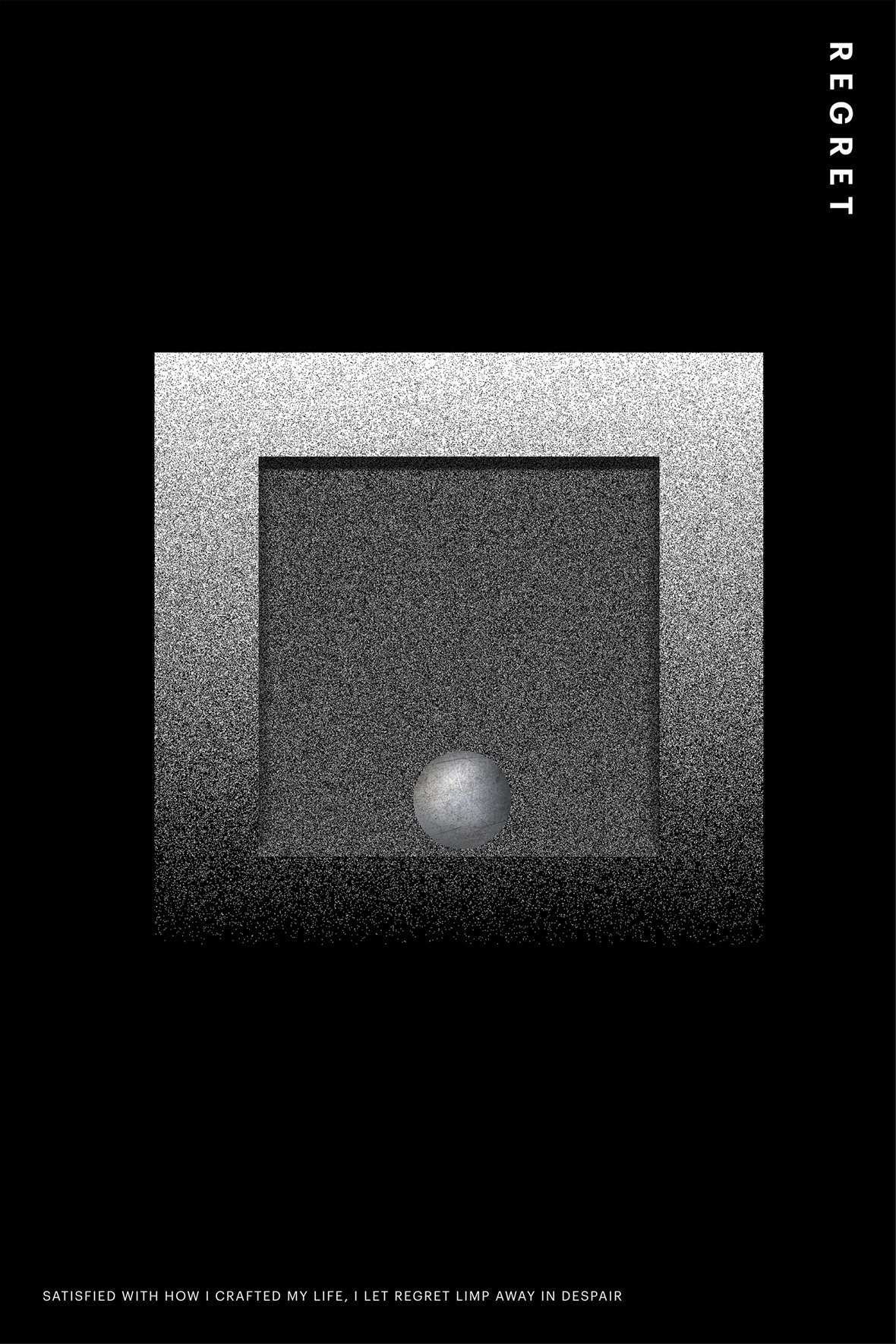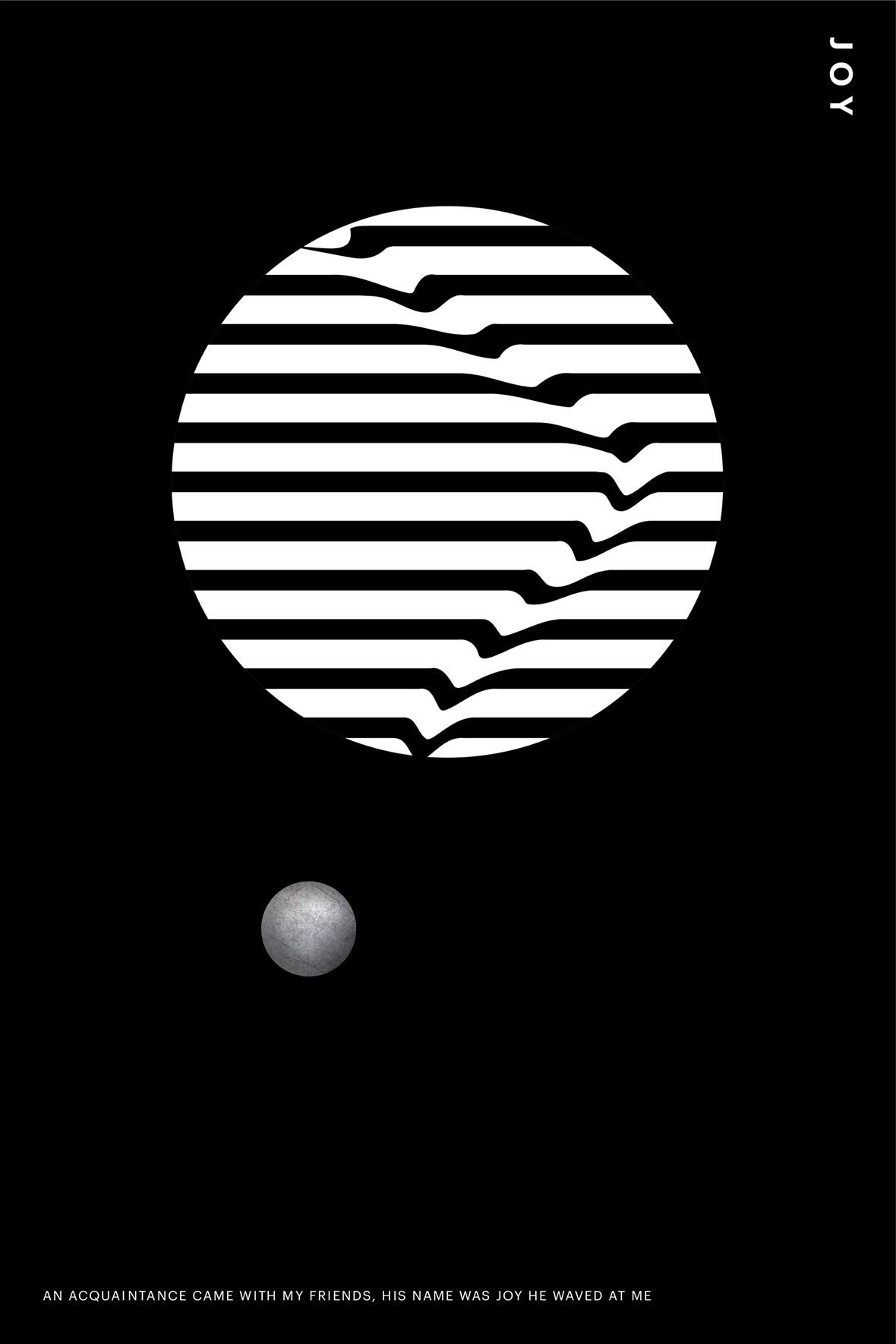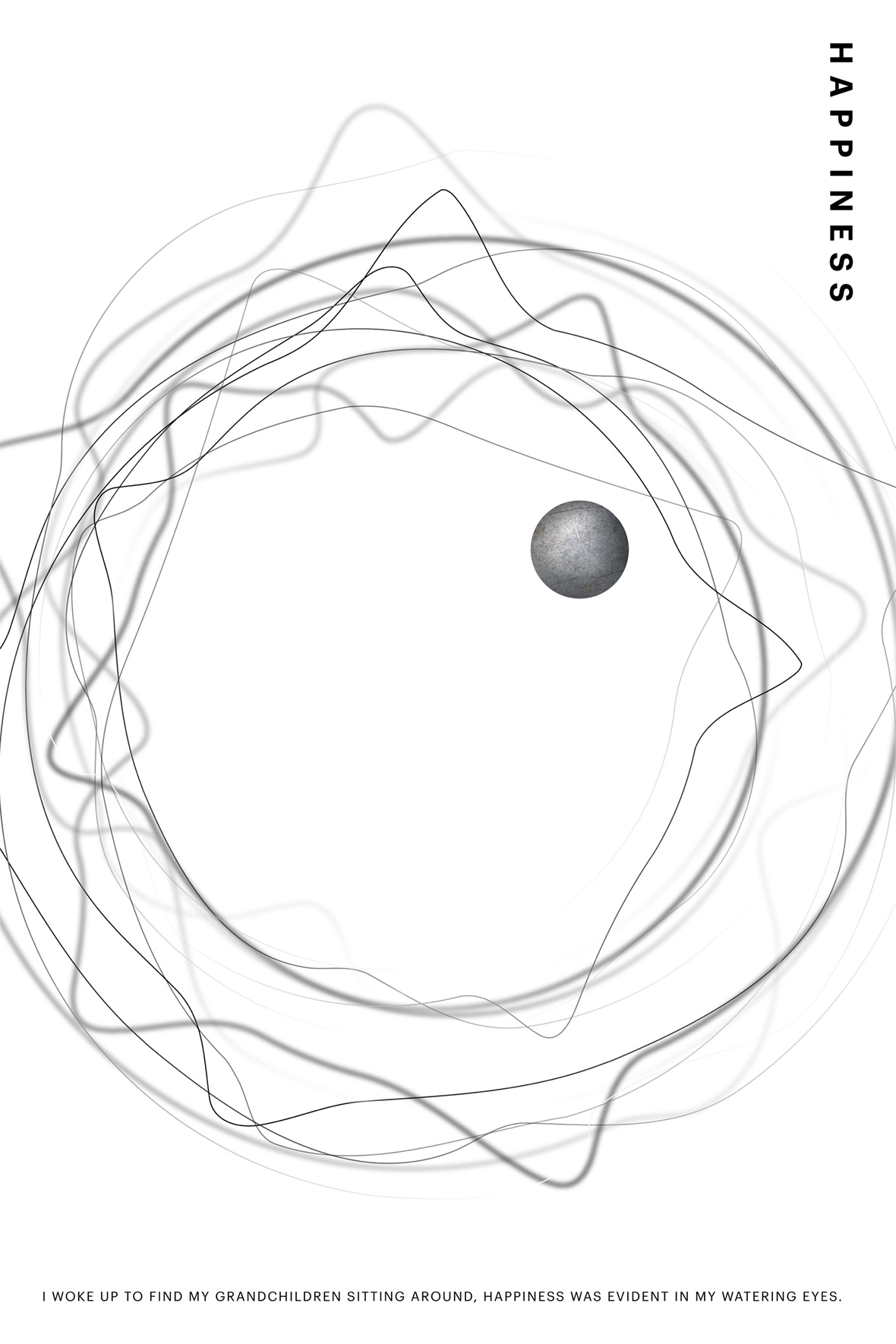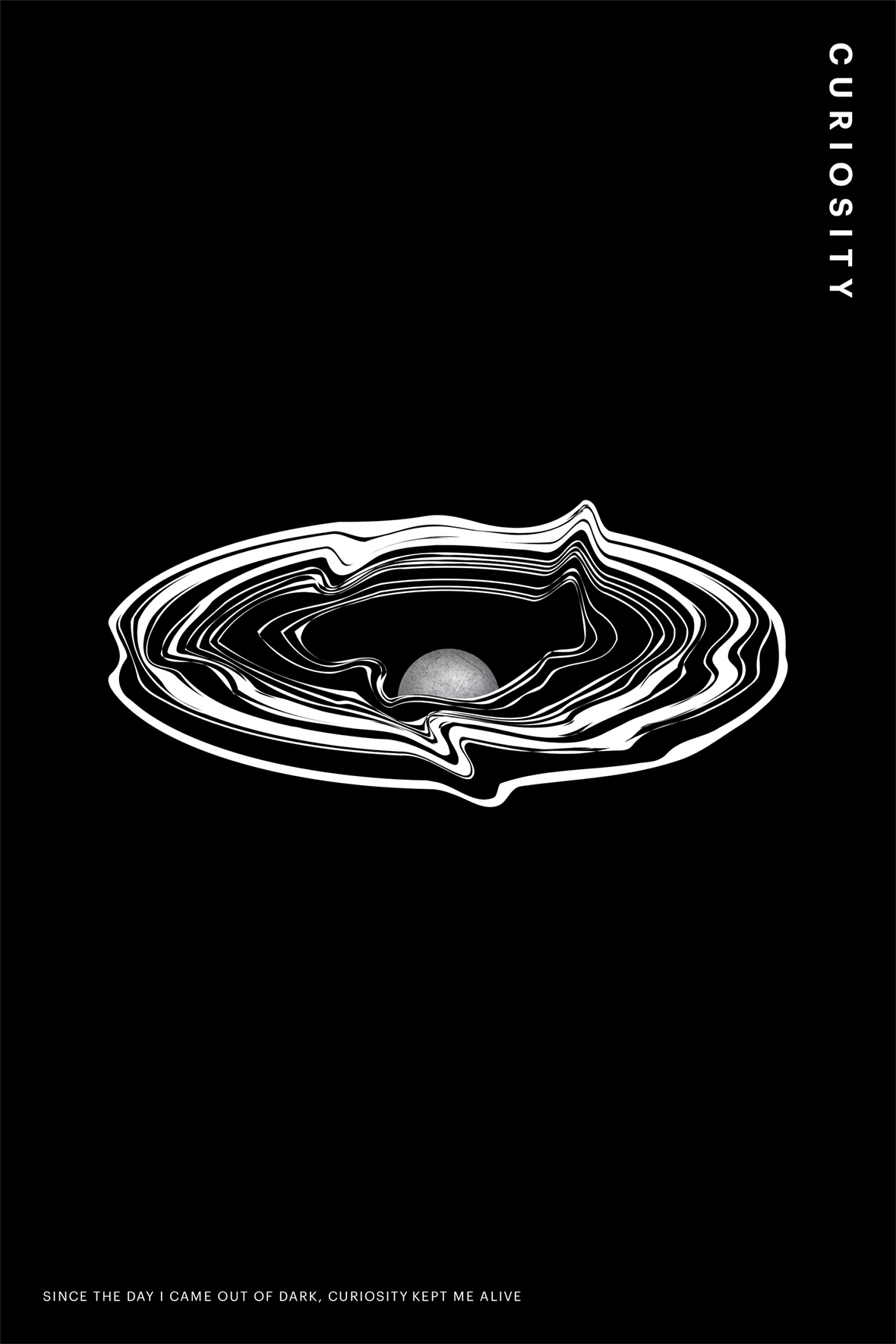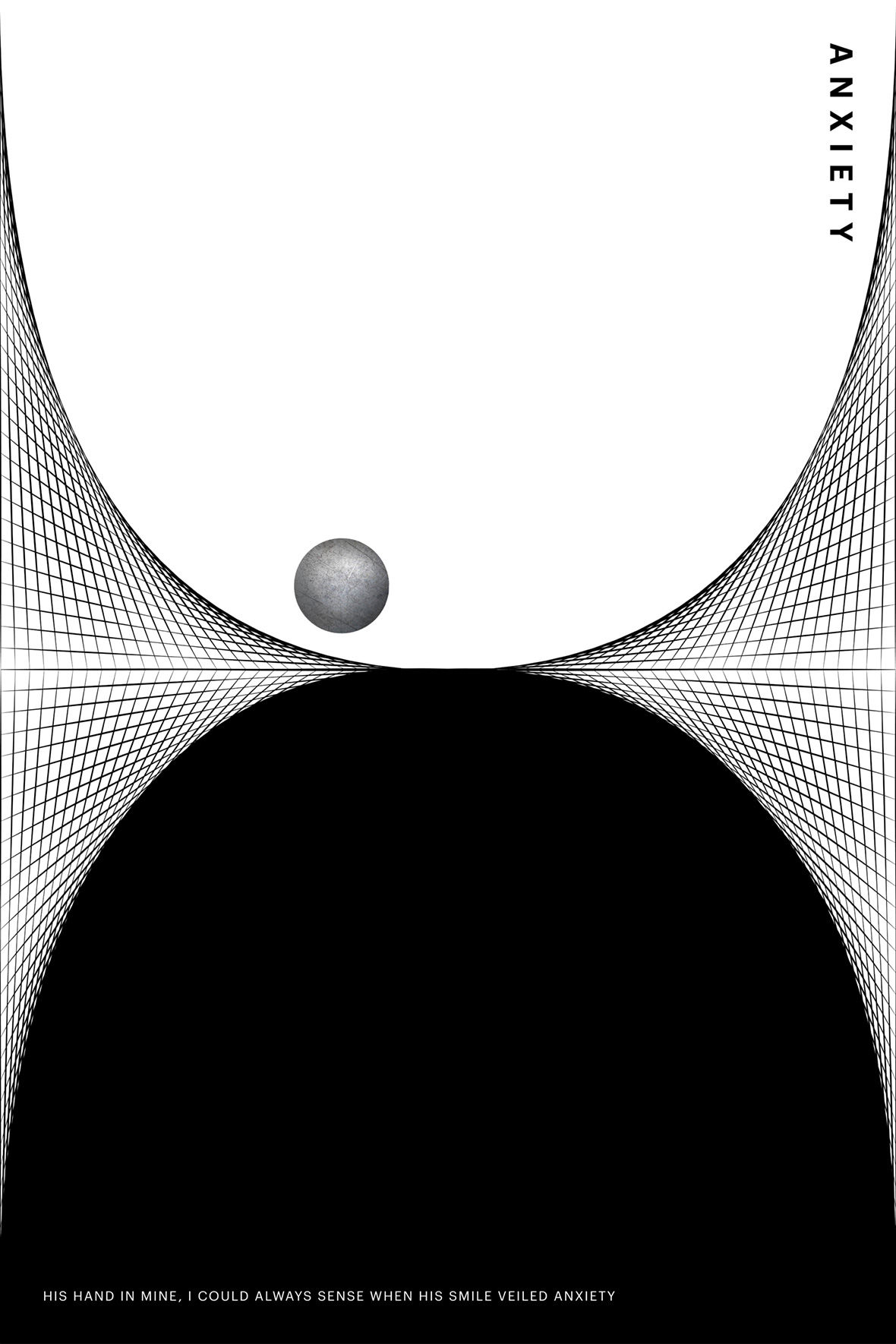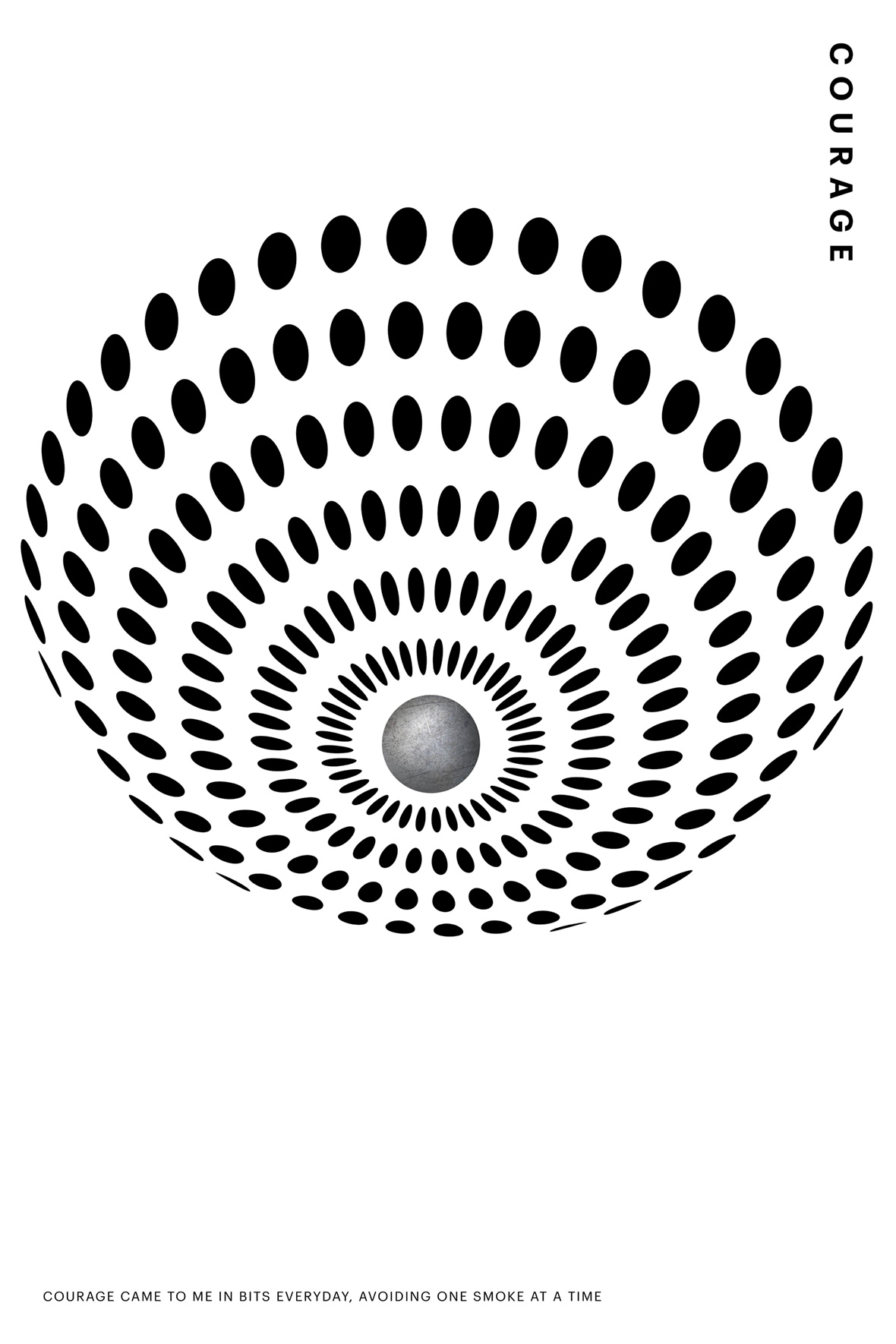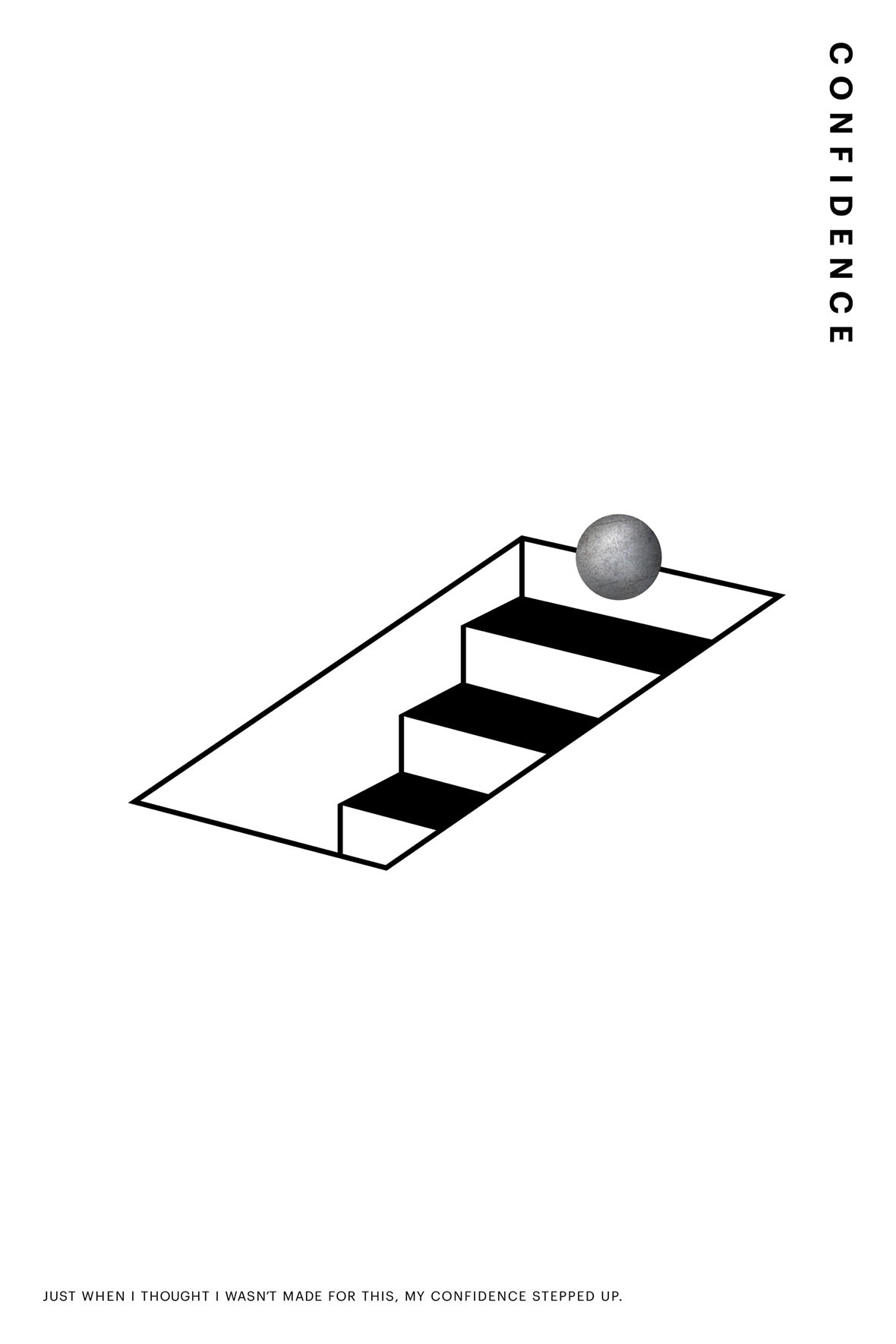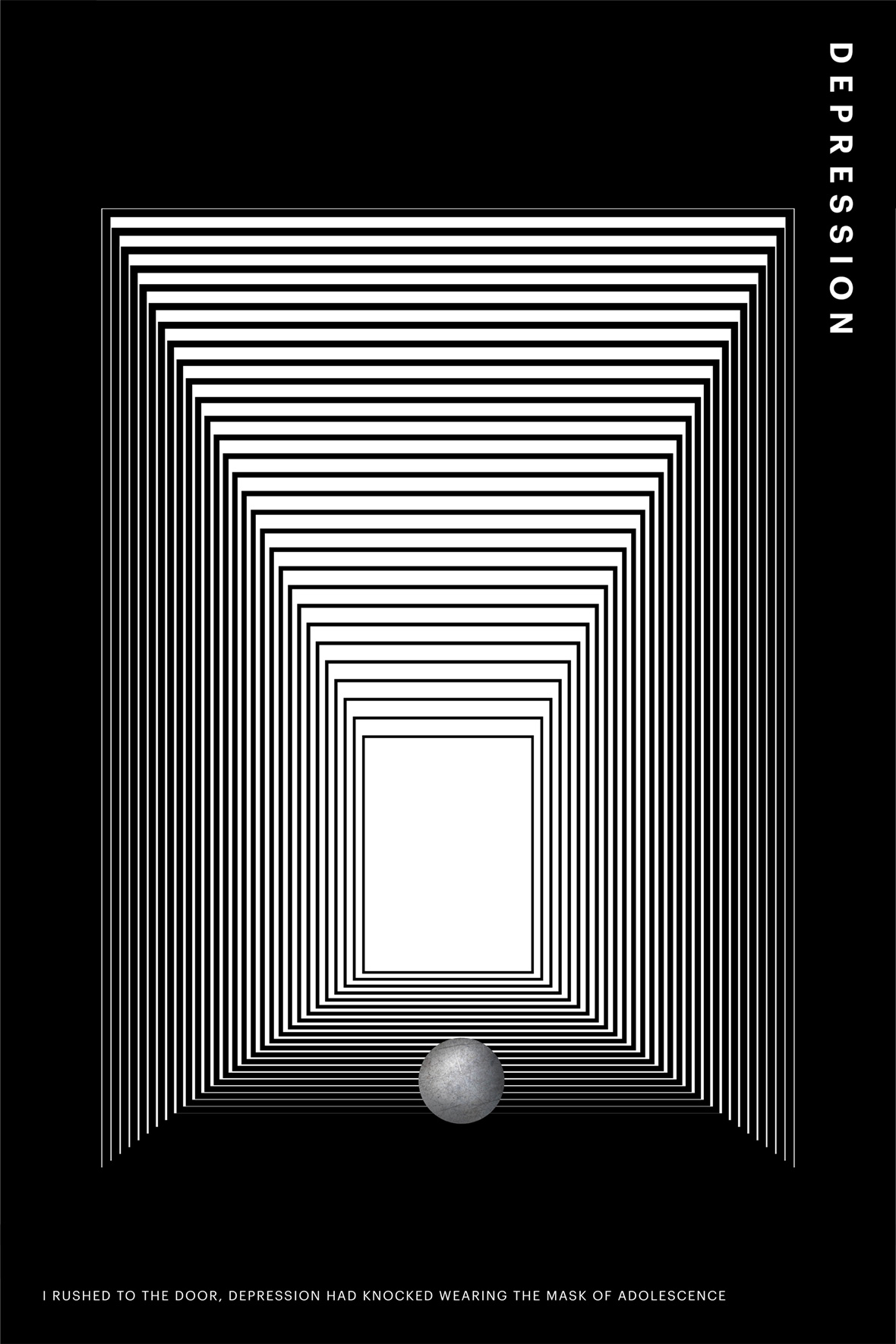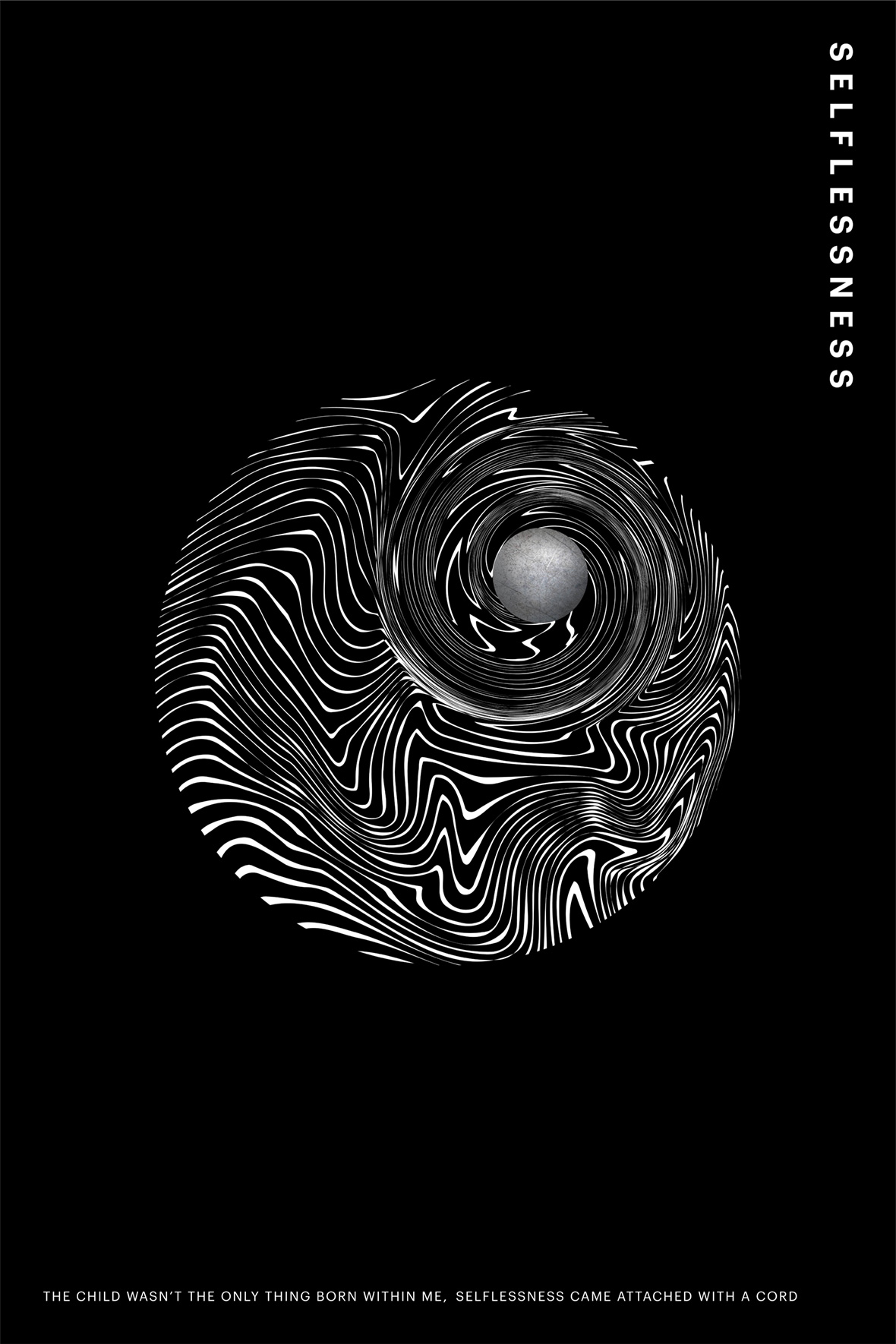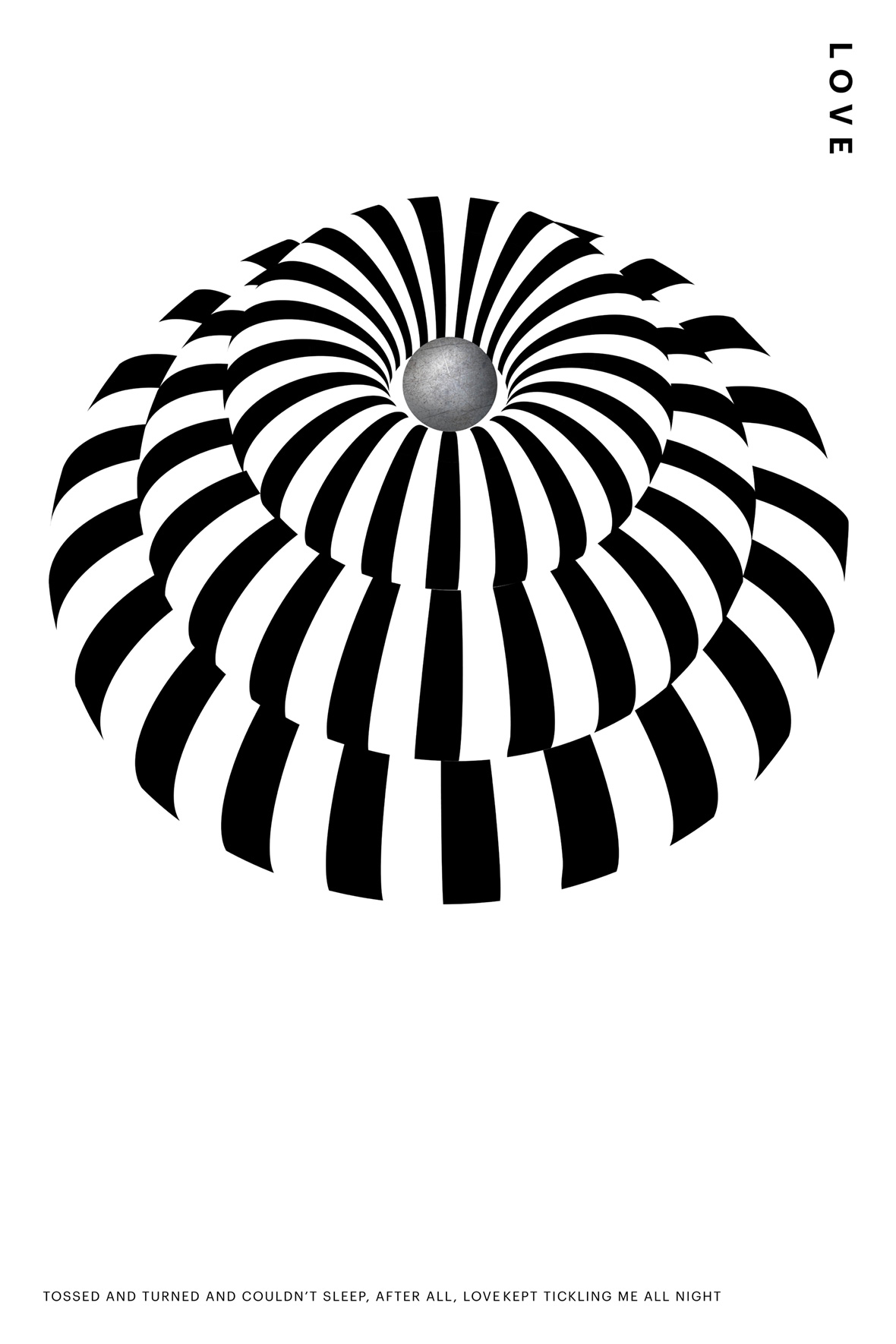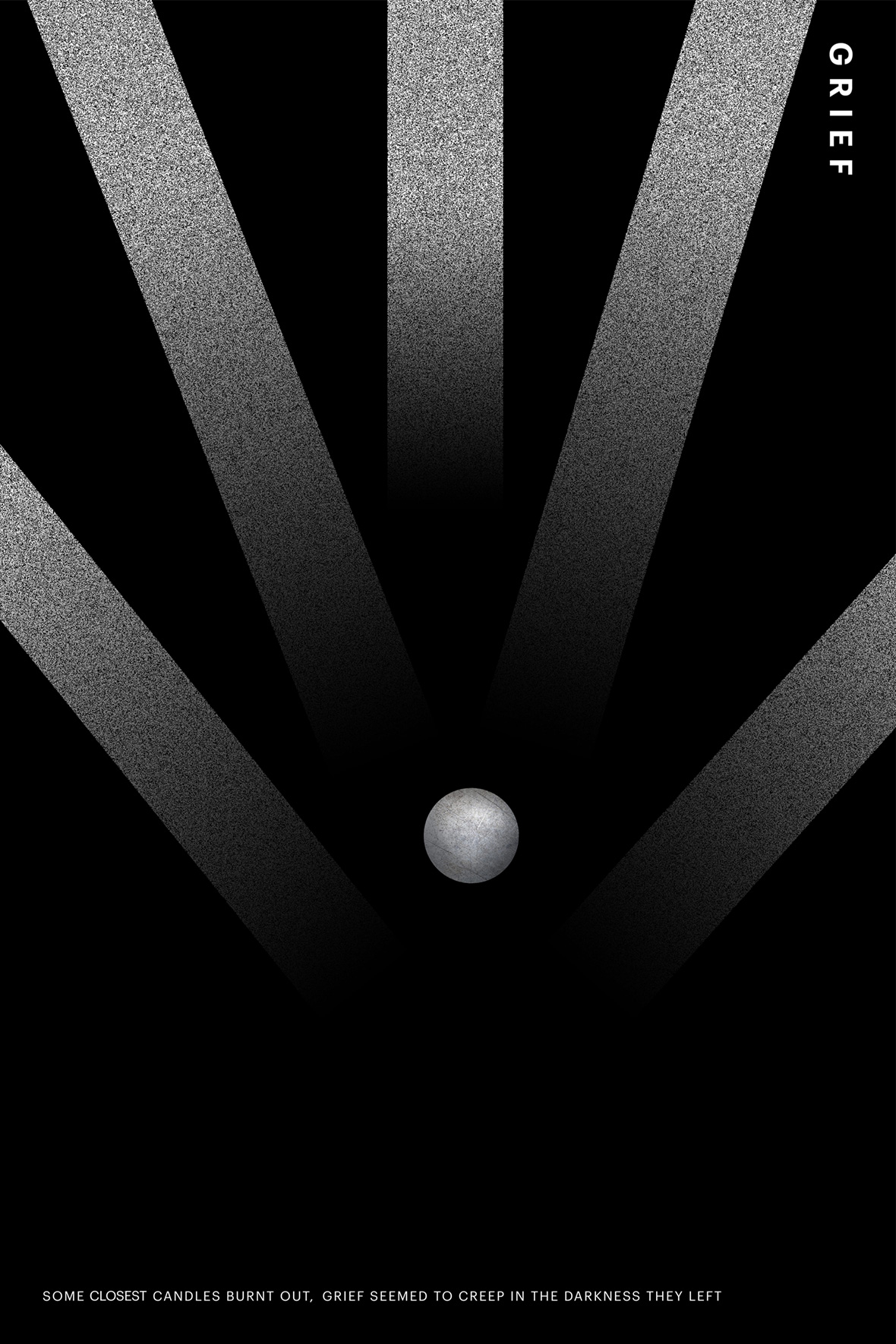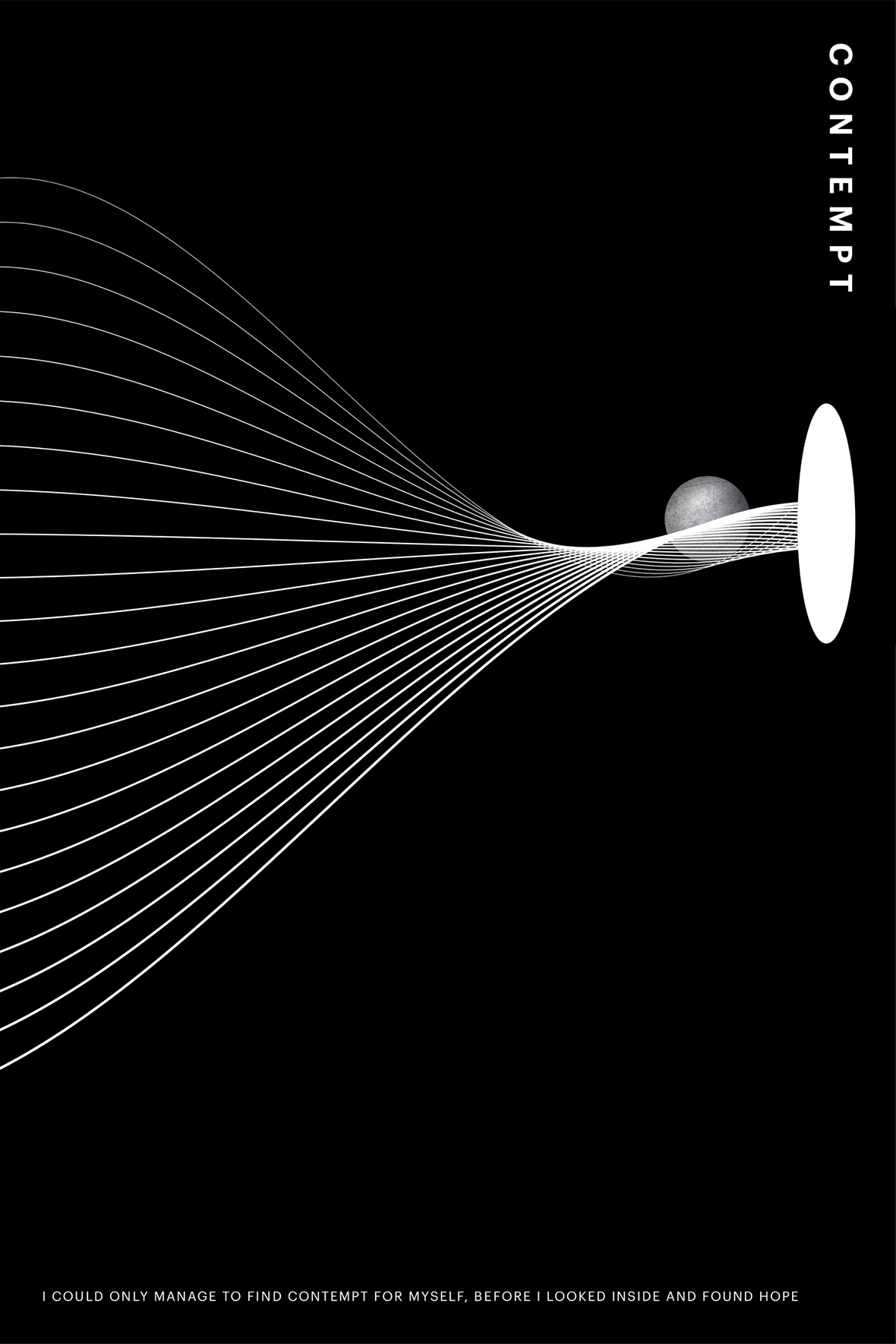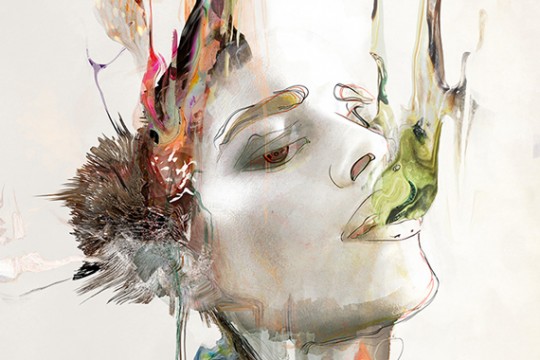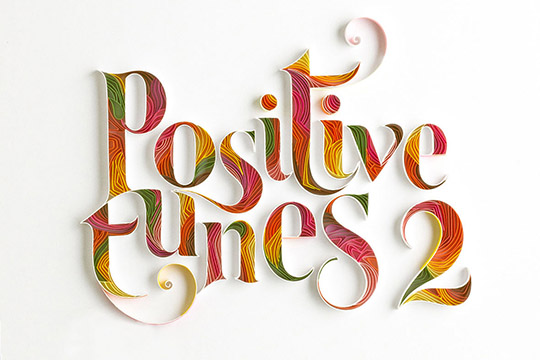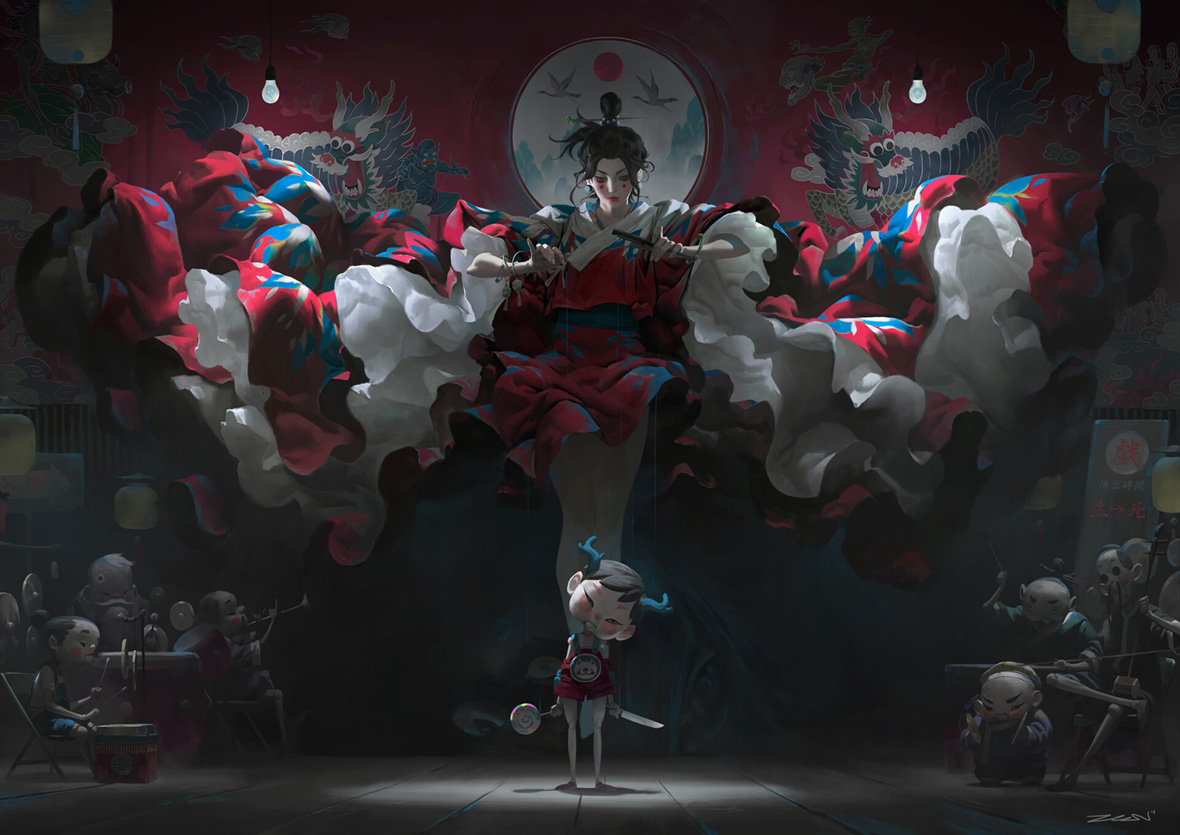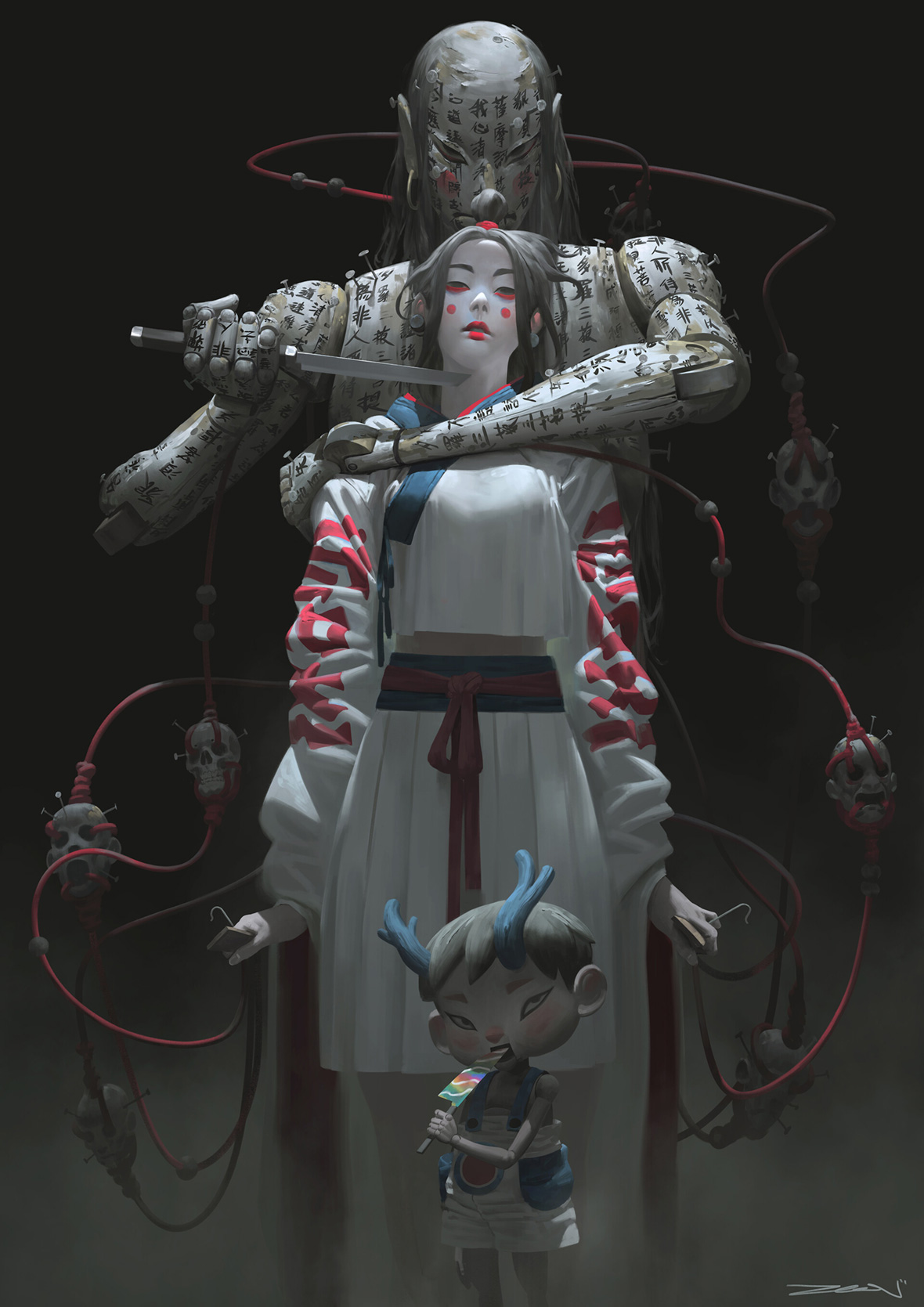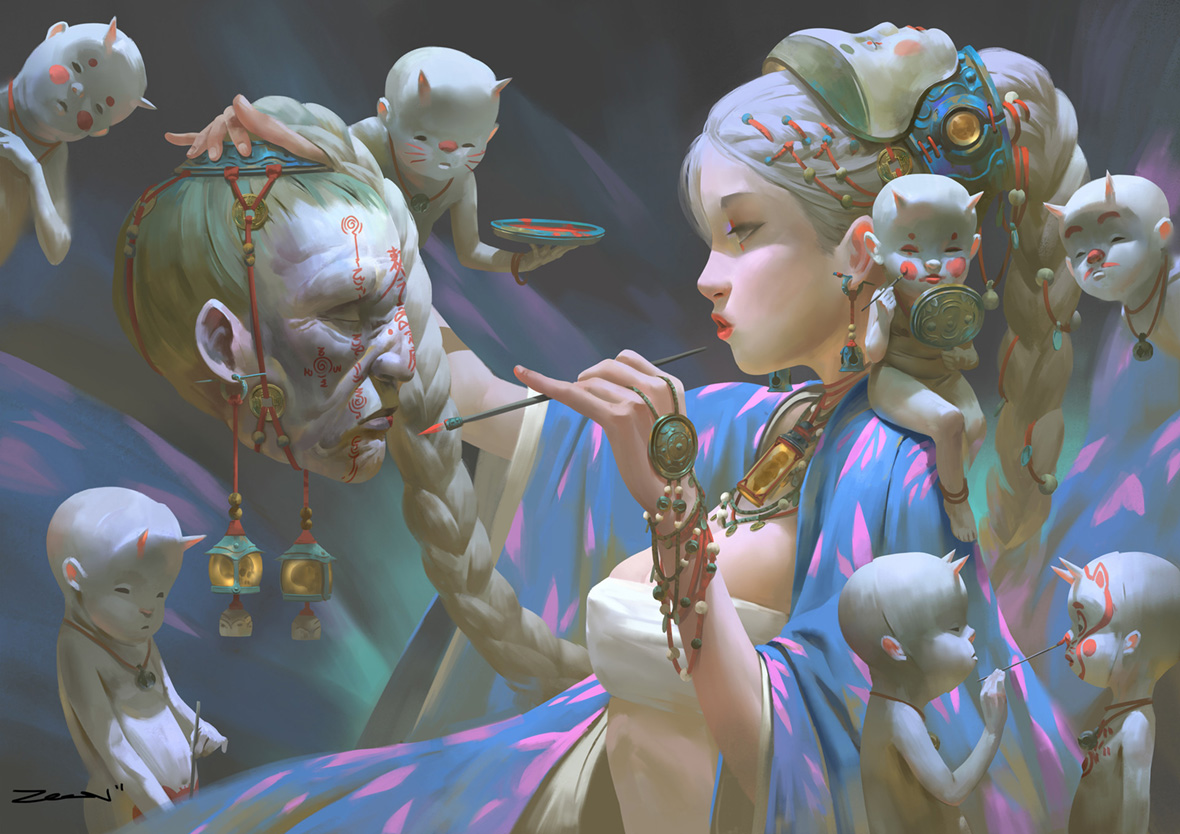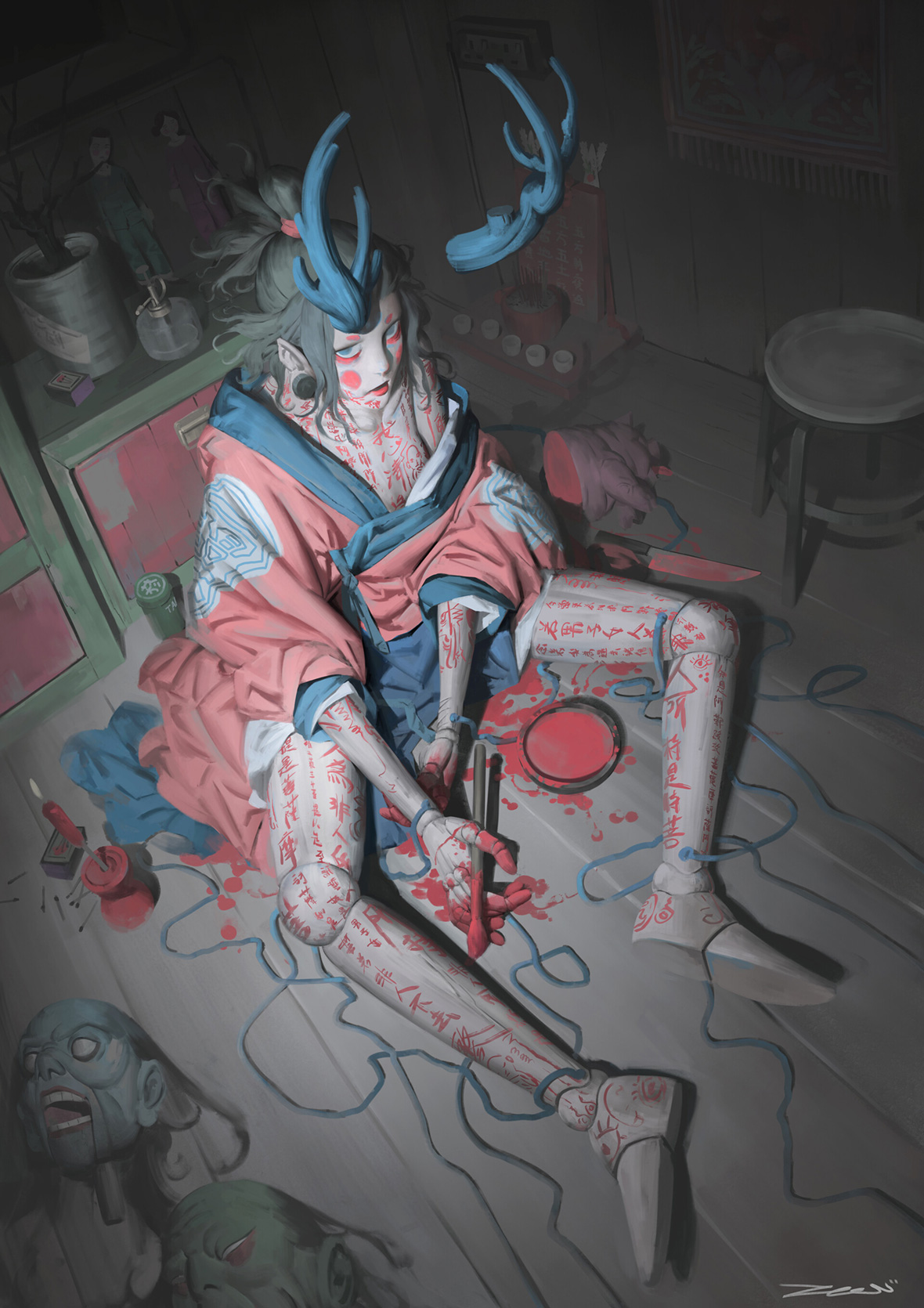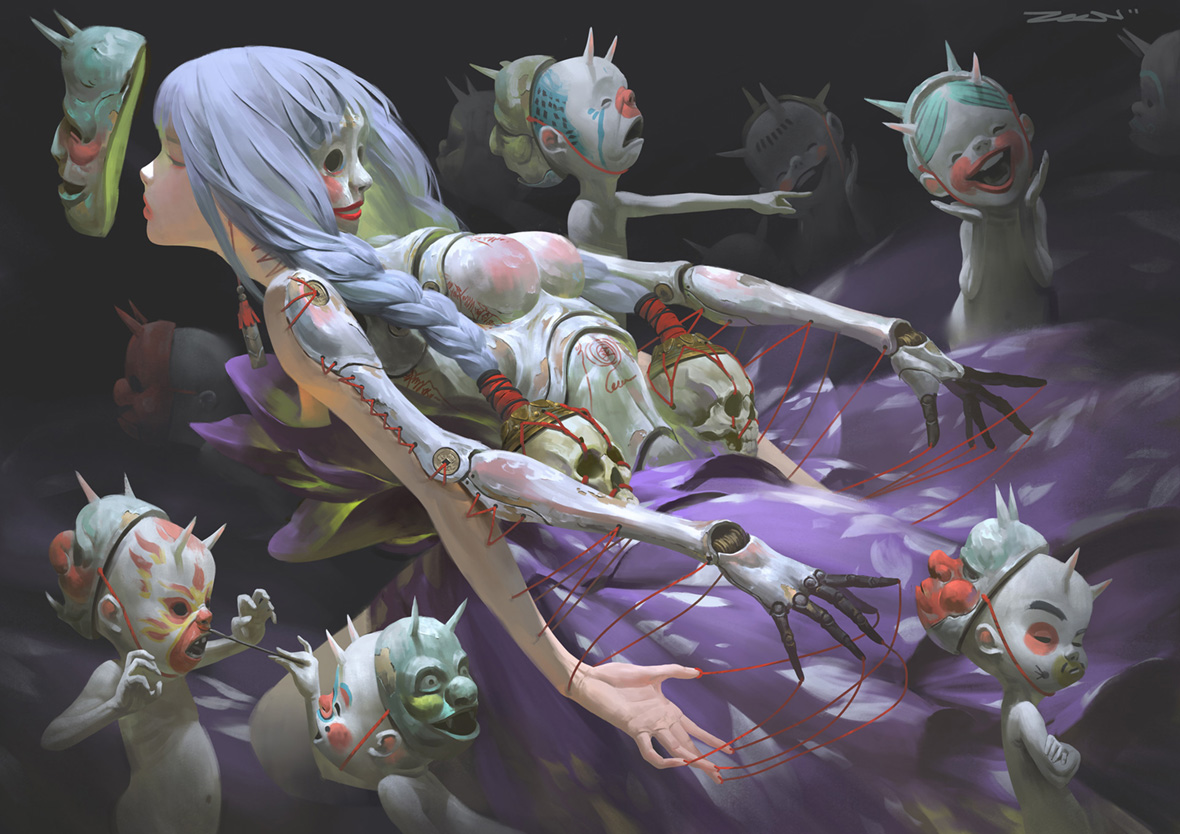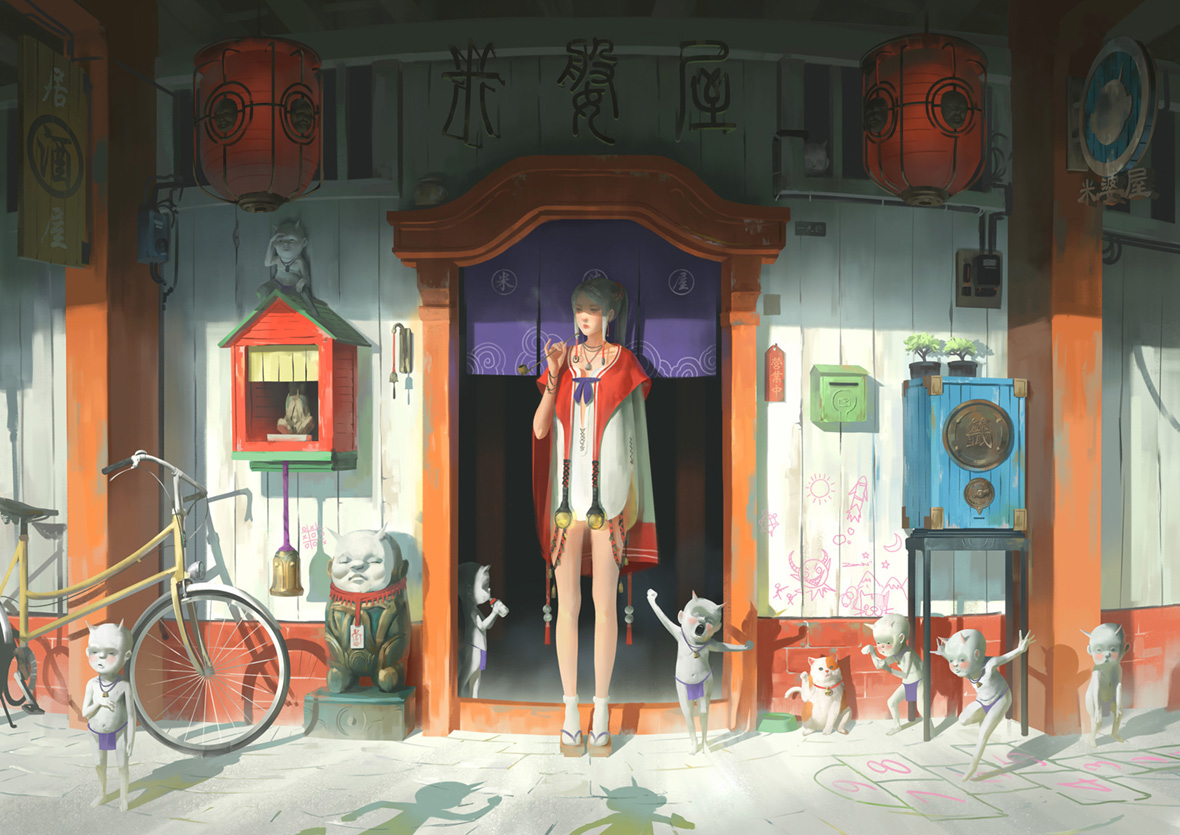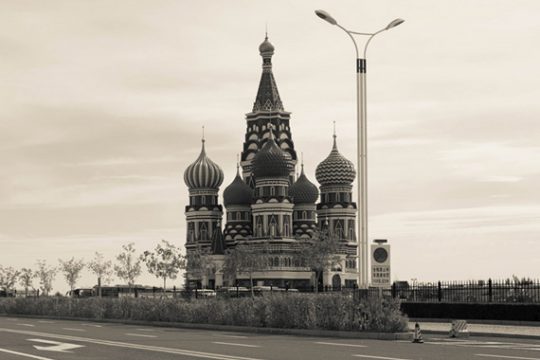
Humanity has become enslaved by technology.
It’s not an easy fact to admit, considering the convenience afforded by technological innovations—whether it be artificial intelligence, big data, or fiber-optic speeds. Our tech-saturated world is making us more anxious and more stressed than ever before, but we’ve decided that these small sacrifices are worth it. Meanwhile, cyberviolence, misinformation campaigns, and privacy leaks have become the norm—hardly deserving of more than a 30-second news segment and few days worth of public outrage before the issue is forgotten. Unknowingly, the dystopic visions of sci-fi have become our reality.
The profound ways in which technology is shaping humanity and culture begs an important question: is it possible to safeguard ourselves against it? Taiwanese director Hsieh Yu-En doesn’t have an answer, but it’s a topic that weighs on his mind. In his films, he contemplates on the future we’re forging through our unhesitant embrace of technology. The dystopic narratives that he brings to life—eerily enough—often feel not that far off from reality. “I don’t look forward to the unknown future, but the unknown captivates my imagination,” he says. “To me, the future means infinite possibilities.”
不可否认,二十一世纪第三个十年的今天,人们的方方面面正在被科技捆绑。人工智能、超高速互联网生态、大数据……这些推动人类科技进步的产物却让我们自己变得被动。焦虑、孤单、社交恐惧、网络暴力、隐私泄漏等种种问题随之而来,好像科幻电影中描述的世界正走入我们的现实。你或许也一直在思考,身处这样的时代,我们究竟该以怎样一种方式去呈现属于我们自己的文化。来自台湾现居上海的导演谢宇恩(Yuen Hsieh)习惯以拥抱未来的创作手段直面当下亚洲青年群体,在世界还未被崩坏之前,用种种预言引发你对现实的思考。他说:“我对已知的并不期待,但总会对未知充满想象,因为未来总有很多可能。”
Hsieh’s speculative fiction is often grounded in present-day reality. In Loveless with Roland, he presents an alternate-universe Tokyo, one in which love has become a coveted commodity. In it, citizens have “love credits” that are tracked by the government, which when depleted, makes them unable to experience love. The three-minute short follows Roland, a seedy loan shark in Shinjuku who’ll happily provide these virtual credits to those who’ve run out. Through Hsieh’s heavy-handed editing, he drives the bleak story along at a whirlwind pace. As farfetched as the story may seem on the initial watch, perhaps there are more parallels between the film and real life than we’d like to admit—after all, the role of Roland is played by one of the highest-paid gigolos in Japan.
在虚拟的日本东京,当地政府通过了 “人类优良计画” —— 指通过大数据的形式,记录每位市民的 “爱情信用积分”。那些信用积分破产的人们被称作 “爱情失能”,并被规定不得与真人恋爱,他们来到新宿歌舞伎町,寻找与 “爱情失能救世主 Roland” 的私密邂逅,故事就此展开。这部名为 《LOVELESS WITH ROLAND》的短片时长不到三分钟,导演采用多个场景,用梦幻与未来感十足的特效处理,带我们瞥见虚构社会中的灰色地带。影片的故事设定虽然不存在,但却由日本第一男艺伎 Roland 真人扮演,反映出现实社会普世价值观与私人欲望之间的冲突。
无法观看?前往腾讯视频
This intermingling of reality and fiction is prevalent throughout Hsieh’s works, often made especially convincing through actors who reprise the role of themselves in a parallel reality. Notable Chinese celebrities, such as MC Jin, Aaron Liu, and Chris Lee, and renowned artists such as John Yuyi and Lu Yang have all starred in his films. Ordinary people of different backgrounds, ages, genders, and worldly outlooks are just as likely to be the leading man or leading lady in Hsieh’s cinematic universes though. “My films are for everyone,” Hsieh says. “I simply propose a possible vision of the future and different viewers can make of it what they will.”
无法观看?前往腾讯视频
Despite his accomplishments, Hsieh wasn’t exactly a model student in school. He was an especially rebellious teenager in middle school and high school, often skipping classes and blowing off homework to read manga and play video games. Acting out was his way of protesting against the unengaging curriculum. “I actually wanted to be a manga artist when I was young,” he recalls. “In class, I drew cartoons all over the pages of my math textbook.” Though his comics-art aspirations were never fulfilled, his interest in storytelling was eventually realized through filmmaking. And based on his films, it’s clear that his passion for manga and video games hasn’t wavered.
Hsieh graduated with a bachelor’s degree in graphic design at Central St. Martins, and his official induction into the world of filmmaking was at the Royal College of Art, where he received his master’s. During his university years, Hsieh enjoyed sitting in on classes he wasn’t enrolled in. “The opportunity to listen in on these different courses helped me widen my perspective and mind,” he says. “The most valuable lessons I learned in the UK were how to ask questions, how to be critical, and be adaptive.”
He considers his graduation project, a low-budget sci-fi flick, to be an important cornerstone in his creative journey. It helped set the foundation for the directorial style he’s now known for and marked the beginnings of his fascination with technology and the future.
中学时代的谢宇恩曾经是一名叛逆少年,高中时期的他常常以看漫画和打电动作为对抗精英教育的方式,他认为长大后如果能在爱好上获得成功,会是一件很酷的事情。他说:“其实我小时候的梦想是成为漫画家, 每天都会在数学本上画几篇八宫格漫画出来。” 多年过后,谢宇恩虽然未能成为一名漫画家,但却在视频领域获得不少关注。 在他如今不少作品中,你依然能感受到多年来对漫画和游戏的热情。
真正接触到视频制作是在大学时期,谢宇恩先后就读了中央圣马丁的平面设计专业和皇家艺术学院的影像专业。当时对传统的授课方式并不是很感冒的他,经常穿梭于各类学科的课堂,他说:“跨系学习的机会给了我很多不同的思考角度。质疑、批判、改变是我在英国的最大收获。” 在经历了不断挖掘自我之后,毕业那一年,谢宇恩选择用一部低成本科幻片完成毕设。从那时起,科技和未来等词语便逐渐成为他作品的关键字眼。
无法观看?前往腾讯视频
The majority of Hsieh’s films are rooted in fiction, but Taiwanese culture was a clear influence in his sophomoric works. In earlier commercial projects, such as Eataipei and Xiu Long, he captures Taiwan with a unique directorial style that blurs the line between the future and the present. Through well-chosen locations, neon-lit lighting, and rapid cuts, these two films present powerful portraits of the island and its inhabitants. His now-signature aesthetics—heavily informed by cyberpunk, video game, lo-fi art, and Japanese anime—began to solidify around this time.
虽说谢宇恩的作品大多来自天马行空幻想,但他也难以掩饰对自身文化符号的重视。在他早期的作品《Eataipei》和《修龙》中,台湾本土多元文化与个人风格相辅相成,构成一副传统与未来相碰的纷繁画面。两支视频在高速流转的光影中汇集形形色色的人群,谢宇恩通过不同的场景与镜头风格来体现不同人物的个性,这些为他日后的视频风格奠定了基础。
无法观看?前往腾讯视频
Hsieh’s films are often a cacophony of sensory impressions. Though his visual style is typically what first comes to mind, the sound design and score are equally important to his work, their inclusion adding a taut energy that keeps viewers immersed in his worlds. Considering Hsieh’s self-professed love of music, this emphasis on the sonic components of his films isn’t all that surprising—in his free time, he’s an avid club-goer and even DJs occasionally.
He’s worked with a number of renowned music producers from around the world, including Air Max ’97, Tzusing, YenTech, Hyph11E, Alex Wang, 33EMYBW, and more. “I’m heavily inspired by East coast hip-hop and Detroit techno,” Hsieh says. “The musicians who made these types of music carry the same sense of freedom and rebelliousness that I want to convey in my films.”
经历了不断跨界与融合,谢宇恩的视频如同一场视觉的文化盛宴呈现在我们眼前。而音乐也作为重要的一部分出现在他的作品中。从说唱到地下电子音乐,几乎所有视频都由激动人心的声音贯穿始终,不乏有 Air Max ’97、 Tzusing、YenTech、Hyph11E、Alex Wang、33EMYBW 等优秀地下音乐人的作品。谢宇恩说:“纽约嘻哈和底特律 Techno 对我很有启发,这些音乐人身上往往带有一种 ‘自由’ 和 ‘叛逆’ 的精神,这些精神能够伴随影像传递给观众。” 而在平日没有拍摄项目的时间里,谢宇恩也经常光顾地下俱乐部并作为 DJ 参与其中。
无法观看?前往腾讯视频
Hsieh enjoys the collaborative process, and most of his projects are created alongside close friends. This affinity for collaboration has led to a number of creative breakthroughs. In 2019, a collaborative project with three music producers and three 3-D artists resulted in Second Life 2.0, an exhibition for virtual gallery Slime Engine that examined issues of gender and racial inequality. The project inspired Hsieh to create Legends of Dystopiasian, a spinoff of Second Life 2.0; this would also be the first time he used 3-D animation in his own work. In it, familiar figures of Chinese mythology—such as Sun Wukong, Nezha, and Mulan—are reimagined as futuristic warriors. “These mythical characters represent fearlessness,” he says. “They’ve arrived in the present day to take on societal, gender, and racial inequality.”
目前,谢宇恩已来上海三年多的时间,在上海快速更新的城市节奏下,谢宇恩认识了不少志同道合的朋友,这同时为他带来更多尝试的机会。一年前的 “史莱姆引擎(Slime Engine)” 的线上虚拟机构中,谢宇恩与三位 3D 艺术家及三位音乐人共同完成了 《Second Life 2.0》项目。不以往不同,该项目运用了大量 3D 动画技术,在一个完全虚拟的背景和画面里探讨了打破种族,性别的现实议题。这样的创作思路对谢宇恩带来了很大的启发,以至于后来制作了另一部全 3D 作品《末世神话 (LEGENDS OF DYSTOPIASIAN)》对《Second Life 2.0》进行了延续。作品将我们熟悉的孙悟空、哪吒、花木兰等神话角色进行了未来设定,谢宇恩说:“三位神话角色代表着无惧的自我姿态,他们来到现代,尝试挑战强权、性别与种族平权等种种议题。”
无法观看?前往腾讯视频
Though Hsieh enjoys working on non-commercial films that test his creative boundaries, he’s no stranger to client work, as evidenced by a body of work rife with commissions from high-profile brands like Nike, Rayban, Adidas, and more. Though they’re commercial projects, these films have often gone viral, and their success has spawned copycats eager to replicate Hsieh’s distinct visual style. The imitators don’t bother him though. “Any form of art that doesn’t communicate the artist’s own values and beliefs isn’t true art,” he shrugs.
创作多年以来,谢宇恩的作品在网络上广泛传播。曾有不少品牌前来与谢宇恩合作,有像 Nike、Ray Ban、Adidas 这样备受年轻人喜爱的品牌,更有不少当代火热的青年文化平台。甚至近些年有很多类似的视频风格纷纷出现,不过对他来说:“任何艺术形式,如果没有透过内容表述自己的价值与信仰, 内核就无法被传递。”

As a director who’s worked across Asia, Hsieh has met young creative leaders and trend makers from around the region. It’s led him to turn his attention towards Asian youth culture. “Youth culture is idolized because young people are fearless, rebellious, filled with angst; they strive to be free and they have an attitude,” he explains. “It’s a culture that fascinates people, including myself.”
The evolution of Asian youth culture and how its spread has been amplified by the internet’s global reach has been of particular interest to him. As with the youth culture of any region—artists, musicians, and designers are key to its dissemination and reception, and Hsieh’s work is contributing to this diffusion. “The internet is bringing Asian youth culture to the world,” he says. “As with any movement, there will be pioneers and trailblazers who people might not immediately ‘get,’ but time will vindicate them.”
As big of a role as the internet and technology have played in propagating youth culture, they—at the same time—may be tainting it through homogenization. In this regard, many of Hsieh’s films can also be viewed as time capsules of sorts for today’s Asian youth, unimpeachable caches of lights, colors, and sounds that capture the aesthetics, outlooks, and beliefs of young Asians in the here and now. “There’s nothing to be scared of,” Hsieh says. “We are the future.”
透过近年的拍摄项目,谢宇恩接触了大量青春的题材,遇到了各种各样的年轻人。渐渐地,他的目光对准了亚洲地区青年文化上面。他说:“很多青年文化的魅力都来自最当初的那种 ‘无惧’、’叛逆’、’愤怒’、’自由’、’张狂’。这些文化产物正在吸引越来越多的人,同样也吸引我。”
随着互联网的繁荣,亚洲地区的青年文化逐渐在世界的浪潮中占有一席之地。在线上的世界里,艺术家、音乐人、设计师成为当代传播本土文化的关键角色。而谢宇恩的作品本身就是一种强有力的传播方式,他认为:“亚洲青年文化正在透过网络辐射至全球,因此会出现一些先锋的、脱离常规的人群出现,需要一段时间才能让人去理解并接受。”
我们不确定未来究竟是怎样的,但在可以确定的是,谢宇恩正用一种超前的视觉形式奋力展现青年文化。这不是对抗未来的形式,而更像是一种在不断反思与颠覆中延续与守护的方式。那些不甘心被时代抹去的我们被映刻在光影中,连同丰富的视觉元素,呈现极富有爆发力的大场面。这股力量来自青春,也来源于活出自我的勇气。
对于这个时代,谢宇恩想说:“没什么好怕的,因为未来属于我们!”
Like our stories? Follow us on Facebook and Instagram.
Website: www.yuen-hsieh.com
Instagram: @yuenhsieh
Vimeo: ~/yuehhsiehstudio
Contributor: Pete Zhang


